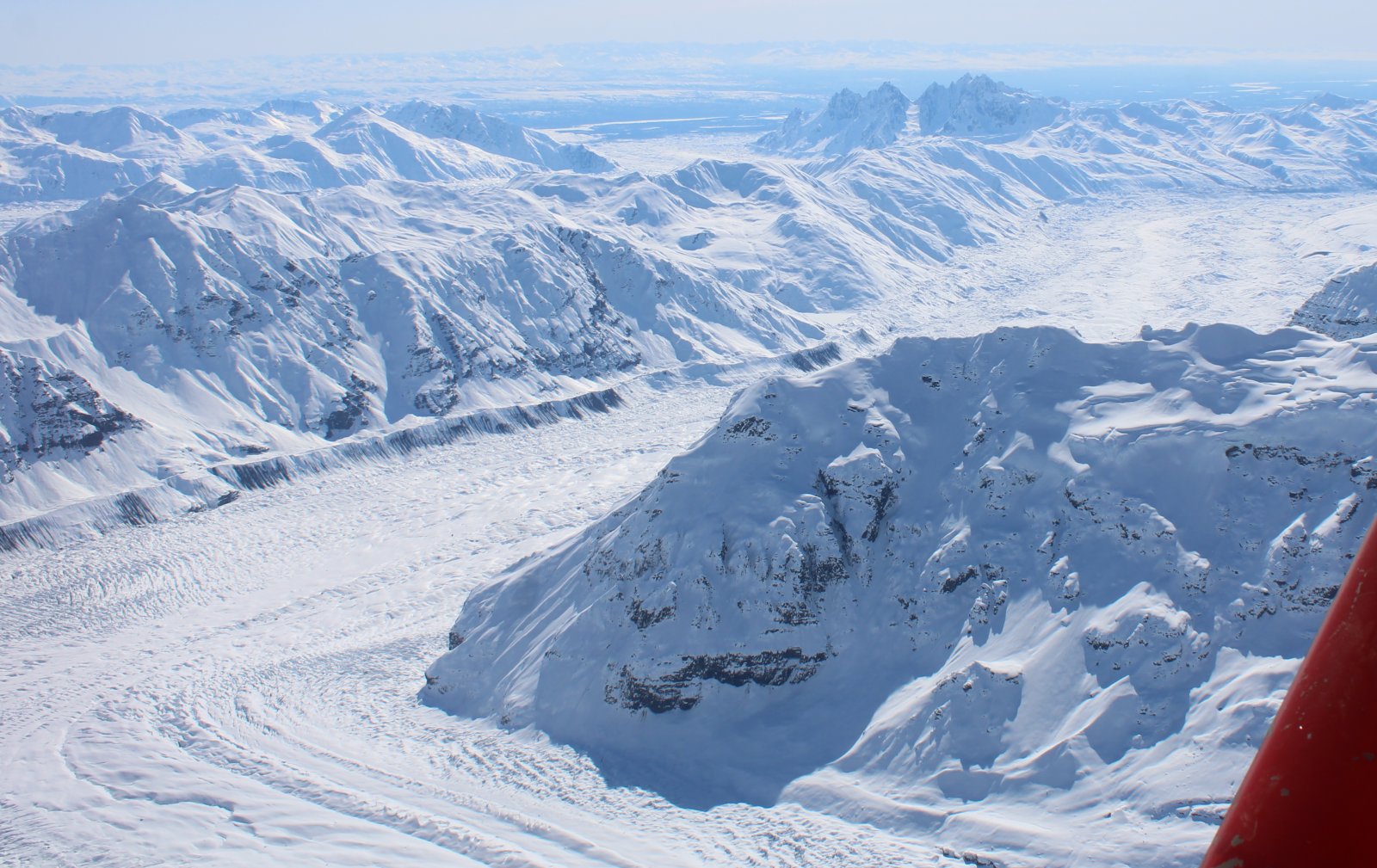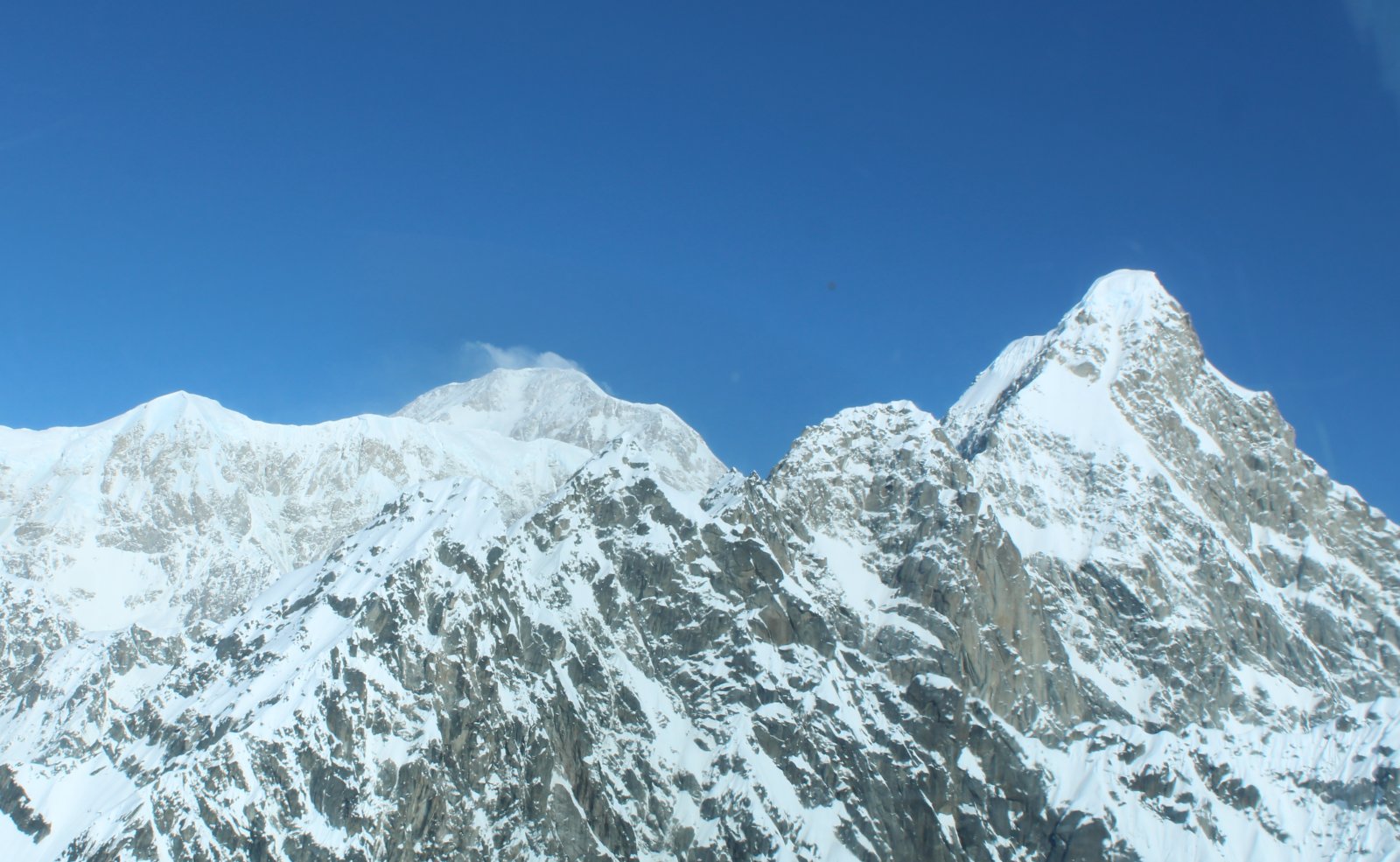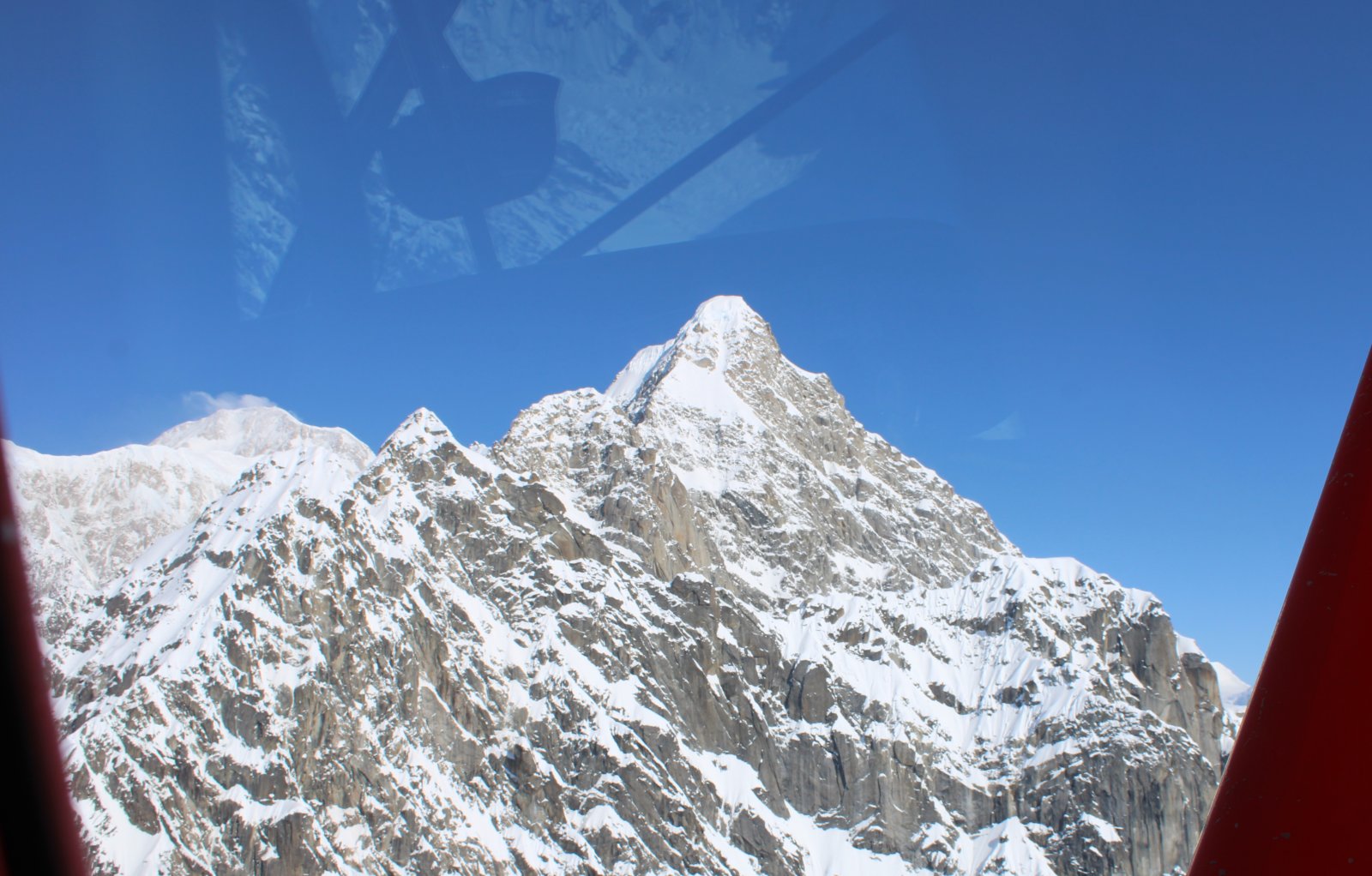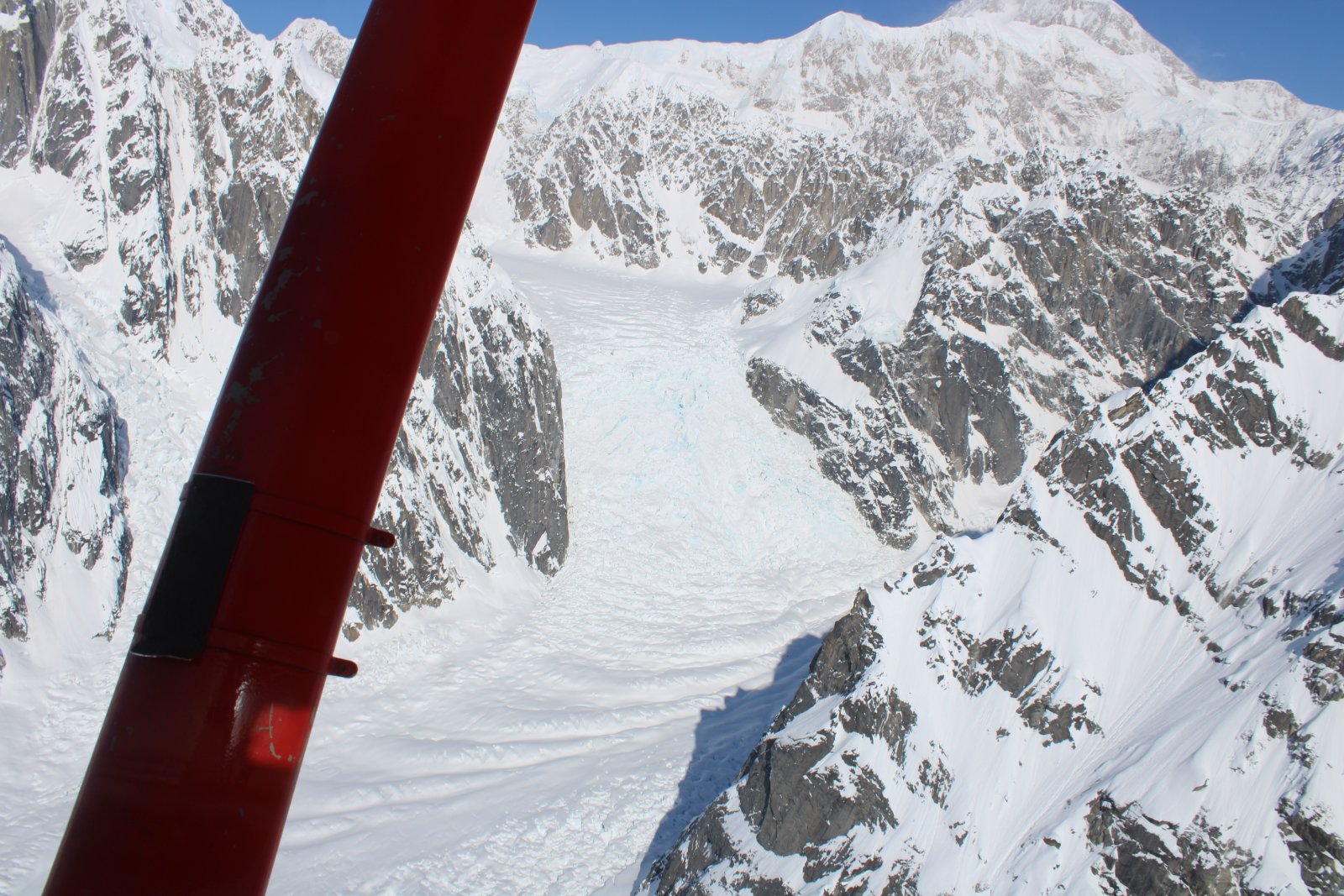April 20, 2023 - Mt. Denali Sightseeing Flight in a Bush Plane
Part One
My youngest daughter Maggie and her family moved to Alaska a few months ago. So, of course, we had to visit them in Alaska. Lynnette and I flew up for a week.
One of my bucket list items is fly with a bush pilot out of Talkeetna Airport to see Mount Denali, highest mountain in North America at 20,310 feet. I figured now would be a good time to do it since it wouldn't be as crowded as during the popular summer months. Of course, the weather might be iffy this time of year. But we lucked out with the weather; almost the entire week was good: relatively warm in the 40s, clear blue skies and light winds. I figured if the winds were light, the air would be smooth. And so it was.
17 years ago, I read a book called "Wager with the Wind: a biography on the Don Sheldon, a famous Alaskan bush pilot who pioneered the technique of glacier landings on Denali (Mt. McKinley) and throughout the Alaska Range. There are multiple air service outfits at Talkeetna but I choose Sheldon Air Services, because of the book. It turned out to be a great choice. I signed up for the Grand Tour plus a glacier landing. It wasn't inexpensive, but if you're going to do it, you might as well do it right.
Maggie, Beau and I drove up to Talkeetna Thursday morning and had a delicious breakfast at the Latitude 62 restaurant.
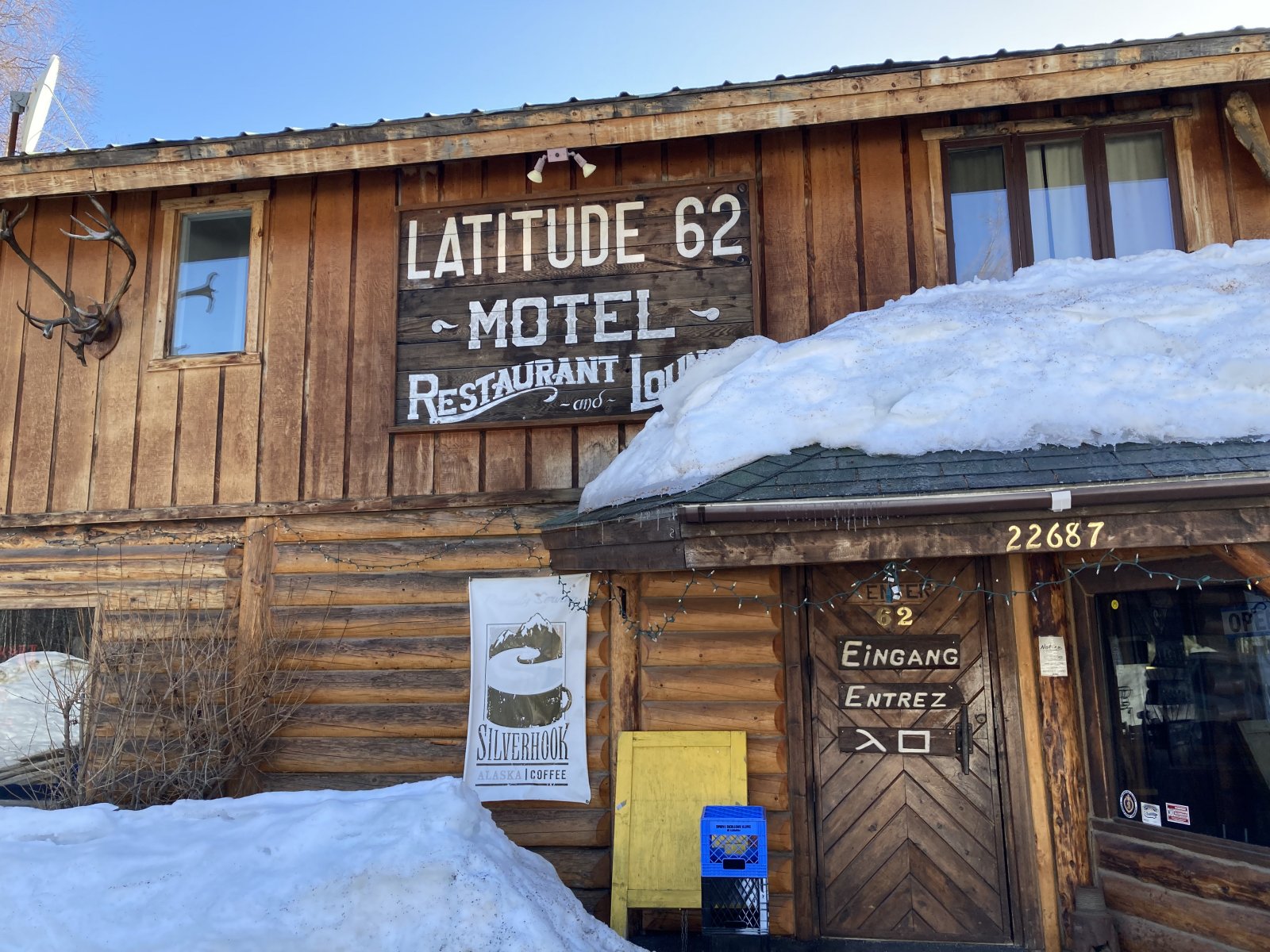
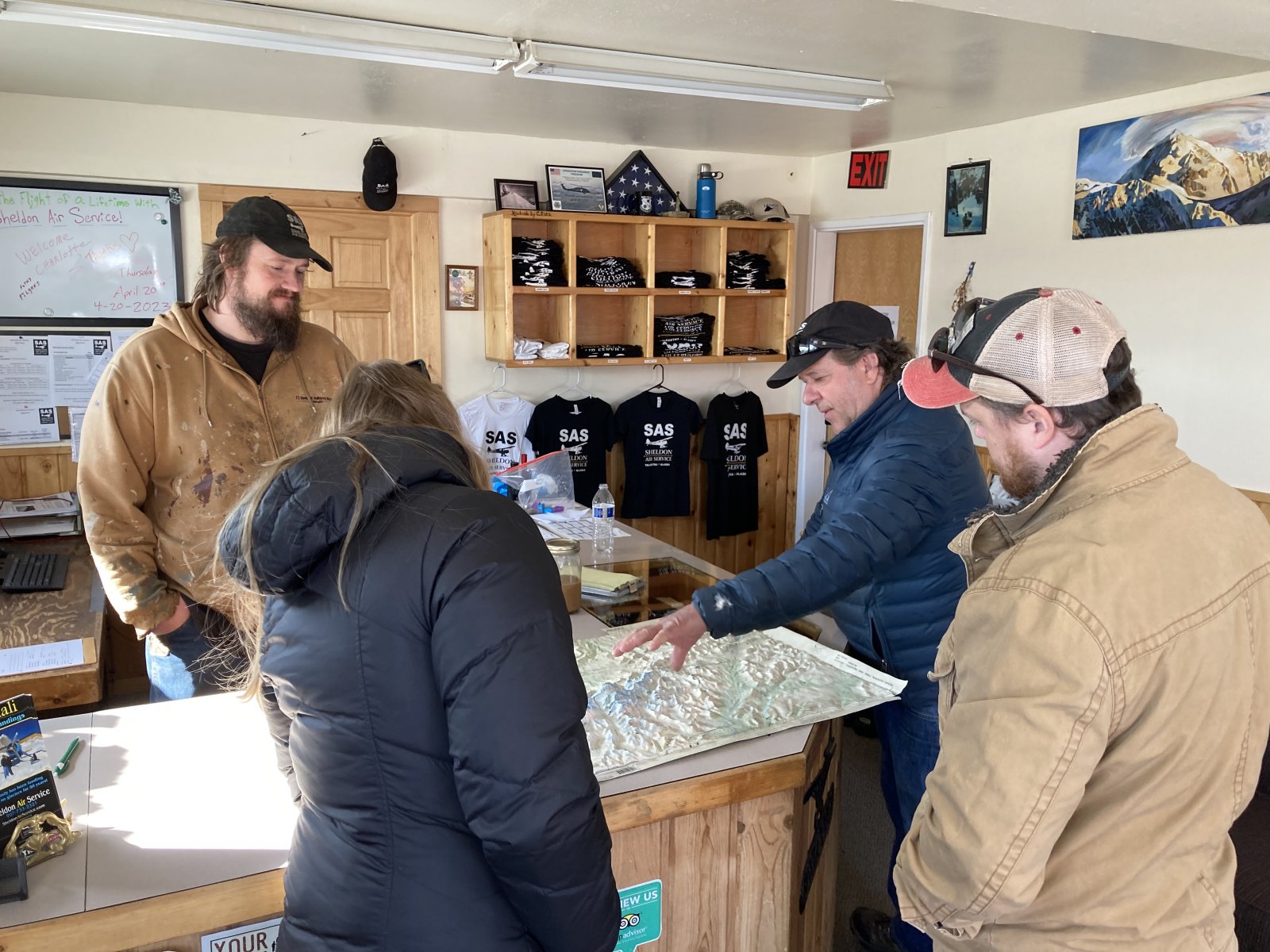
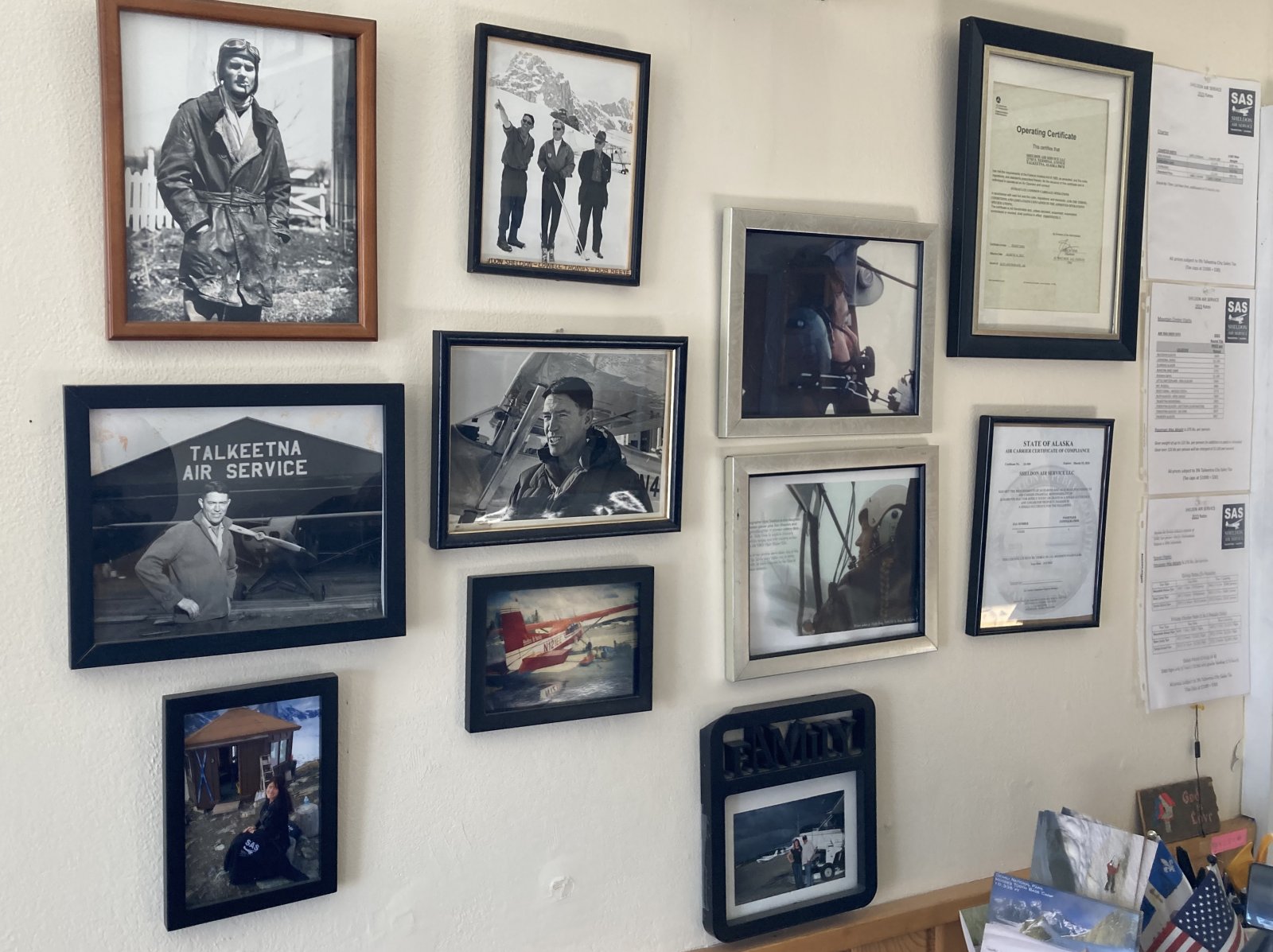
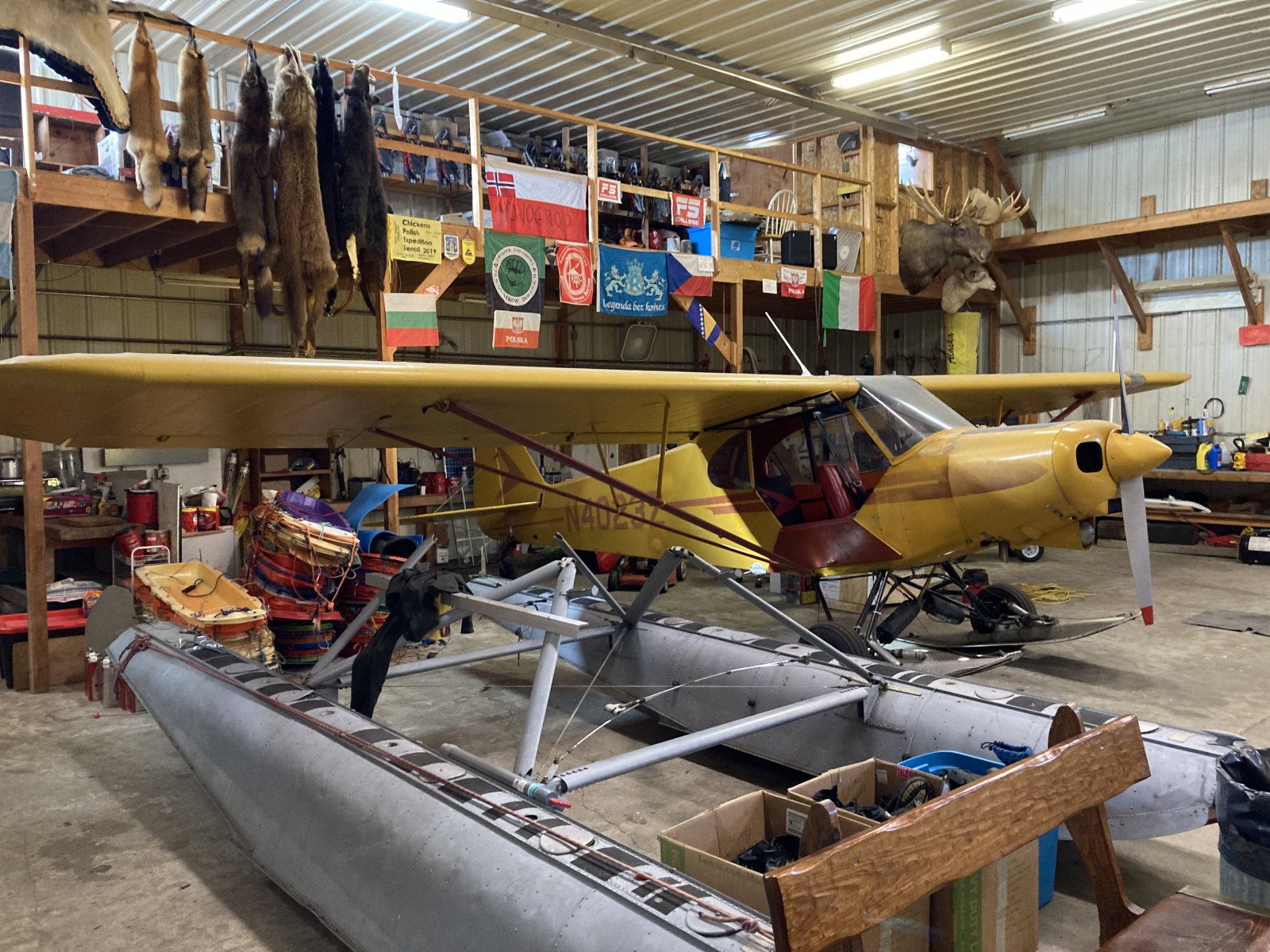
Parked outside, ready to go was our ride: a Cessna 185 -- the best bush plane ever made, we were told. I believe it.
The Cessna 185 Skywagon is a six-seat, single-engined, general aviation light aircraft manufactured by Cessna. It first flew as a prototype in July 1960, with the first production model completed in March 1961. The Cessna 185 is a high-winged aircraft with non-retractable conventional landing gear and a tailwheel. The 185 has a six-cylinder, 300 hp Continental IO-520-D engine. Over 4,400 were built with production ceasing in 1985. This Model F version was built in 1979.
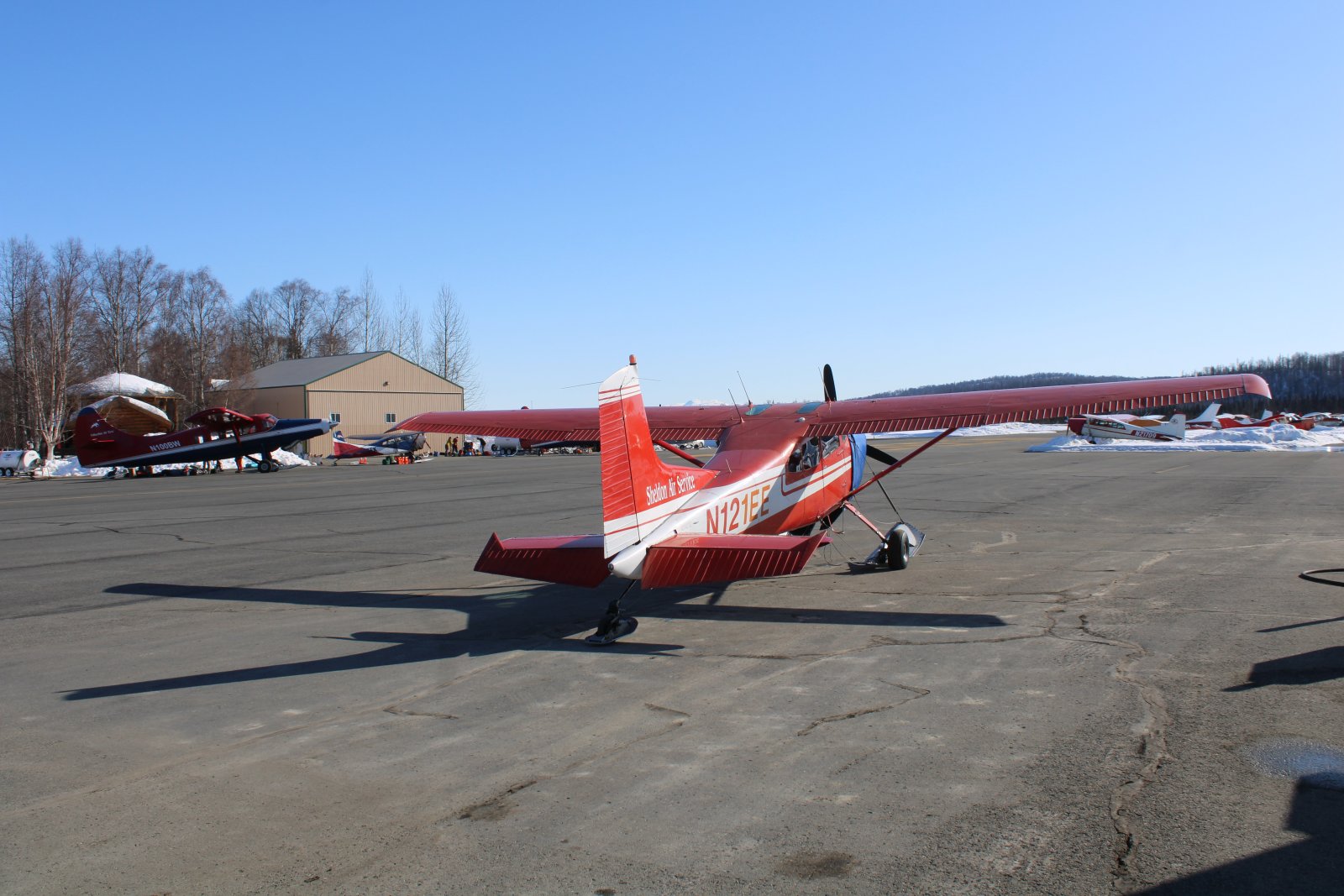
The four of us got strapped in and were soon taxiing for takeoff at Talkeetna Airport (PATK).
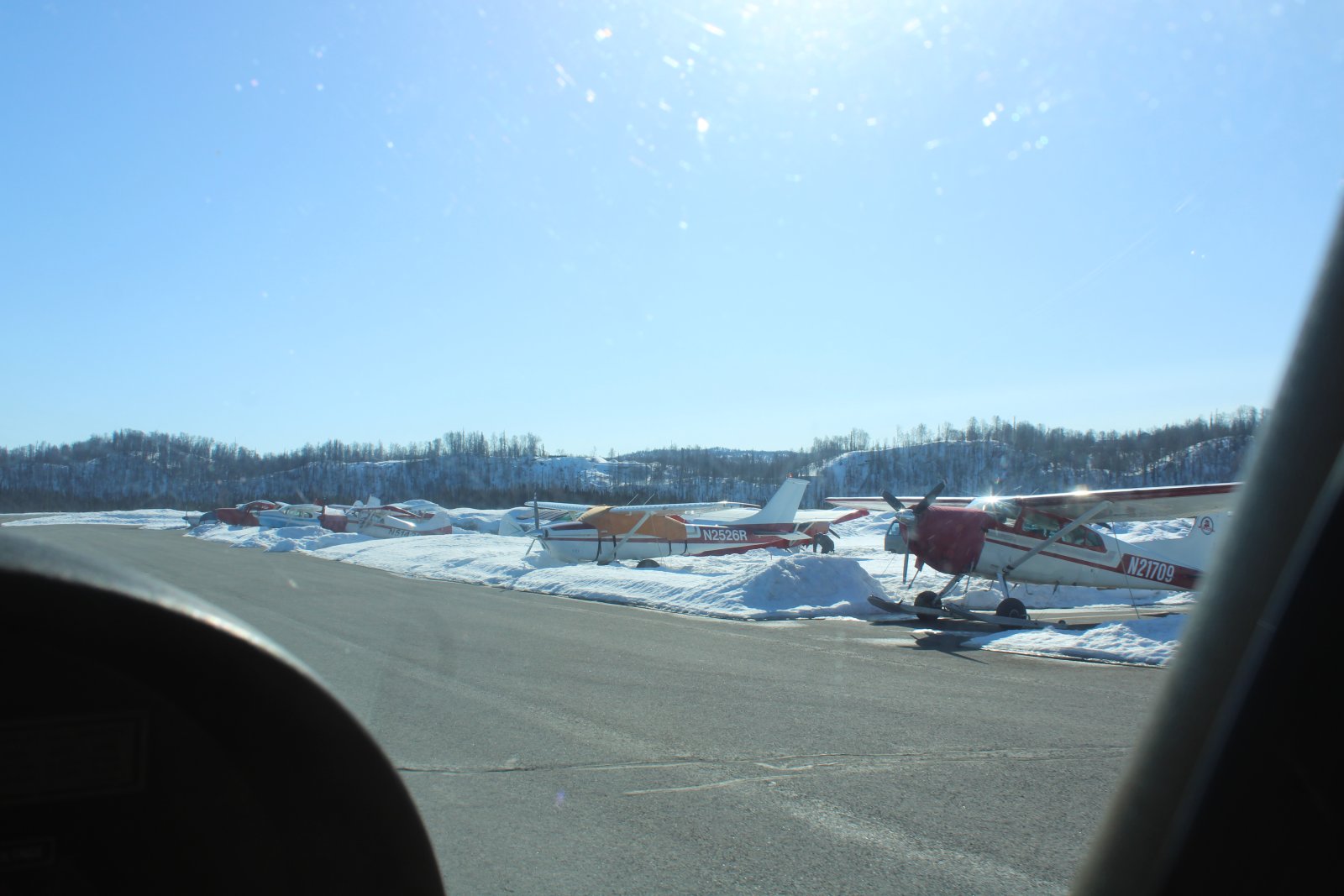
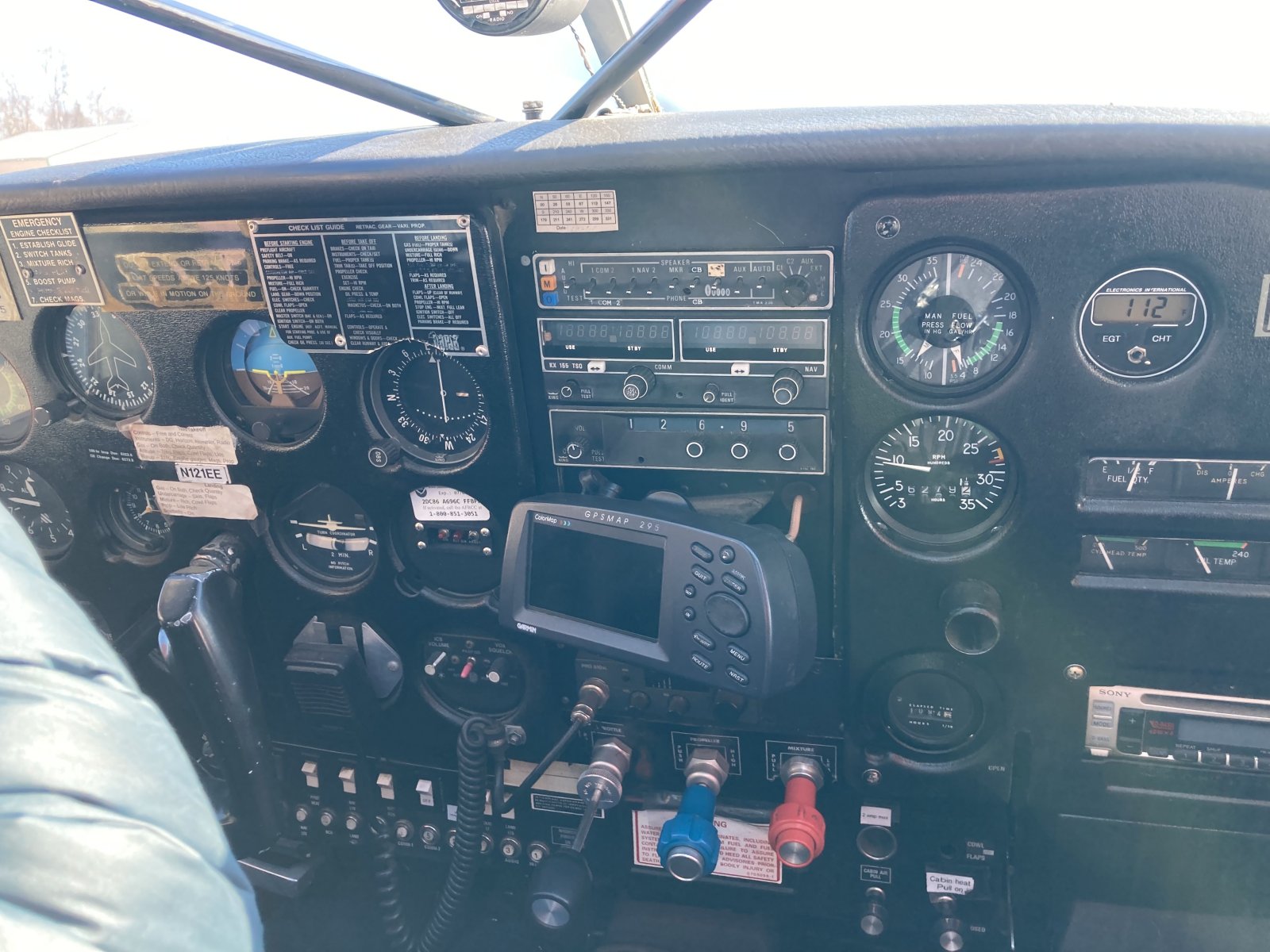
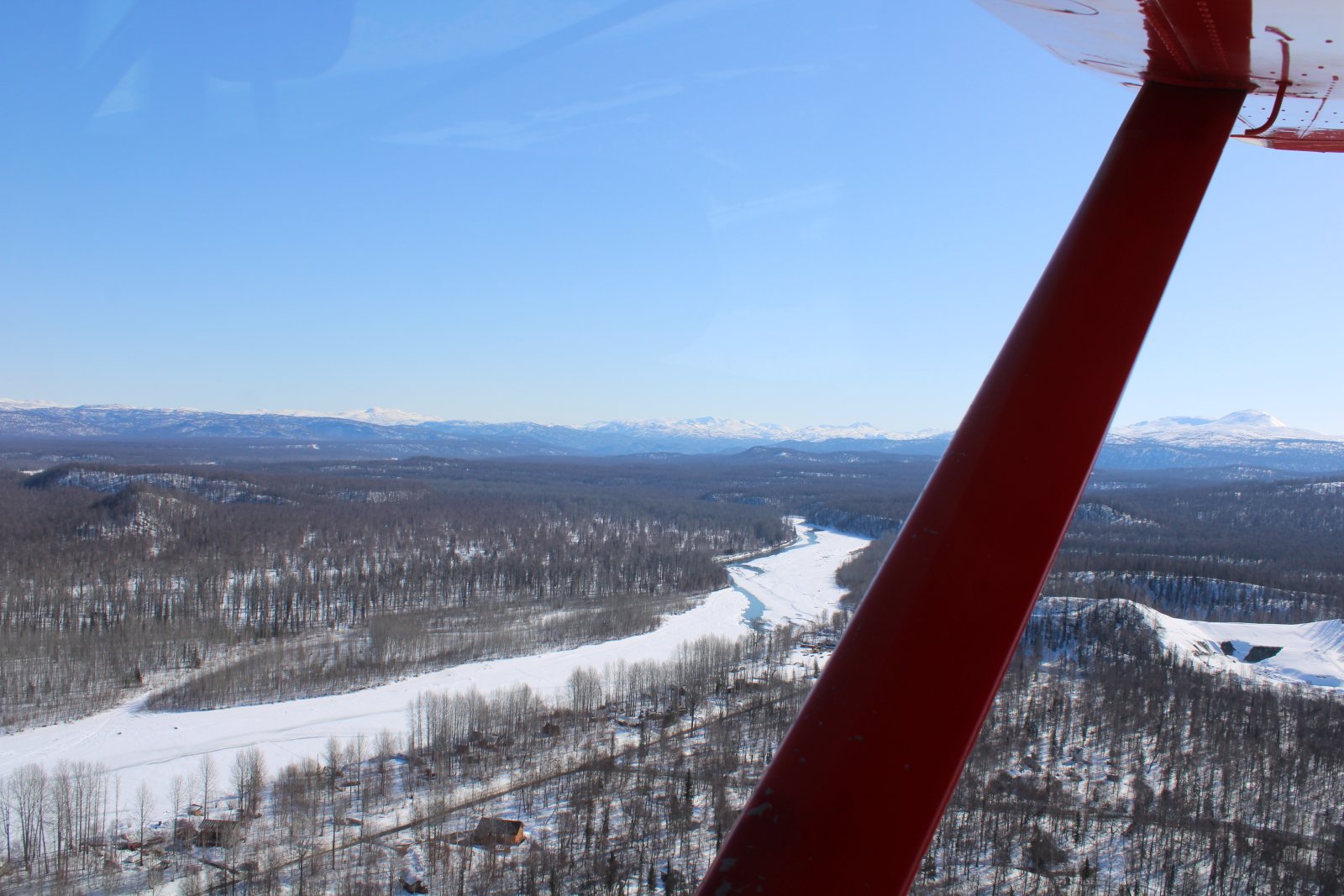
Our first glimpse of Mount Denali! Heading north-northwest, we are headed straight for it. Denali is 20,310 feet, but the two mountains to Denali's left are no slouches either. Mount Foraker (17,400 feet) is 14 miles southwest of Denali and Mount Hunter (14,573 feet) is eight miles south of Denali.
As you can see, visibility is exceptional. I estimate Denali is over 50 miles from where we are now as the Bald Eagle flies. Not a cloud in the sky. Winds are light. It's not even cold, although we are all wearing our winter coats in the plane.
Talkeetna Airport field elevation is only 365 feet so we were in a slow steady climb -- 300 fpm or so -- all the way to the mountain.
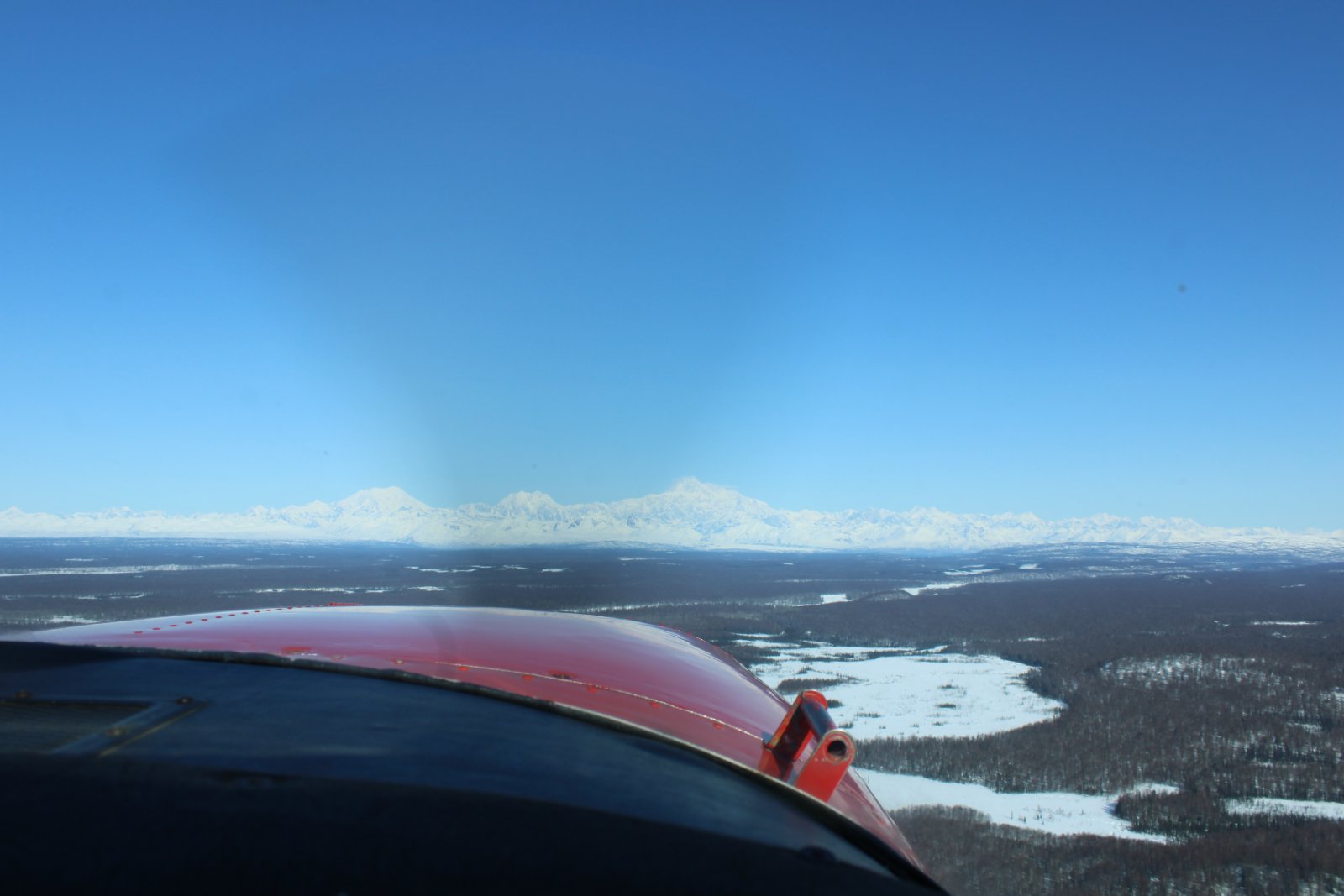
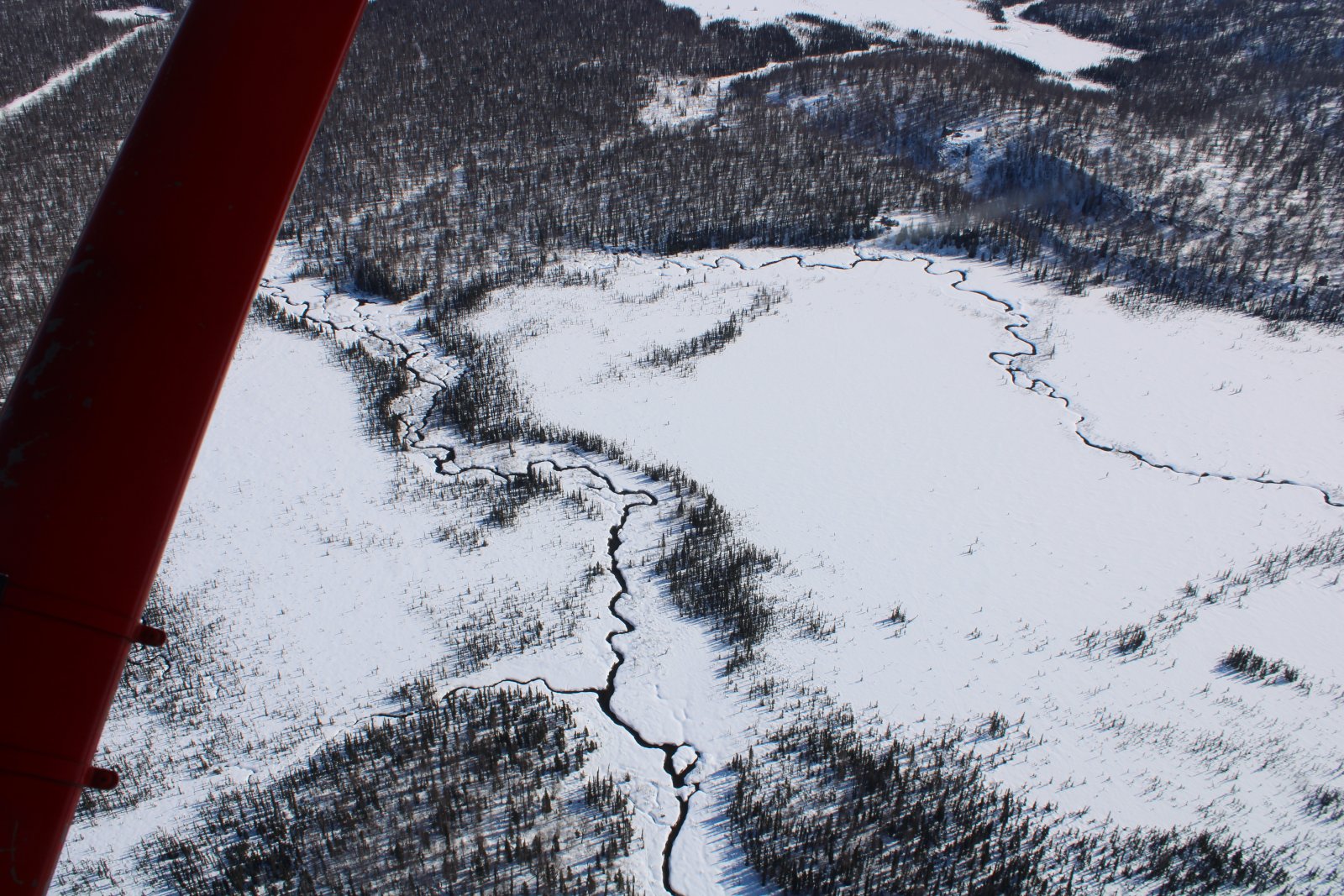
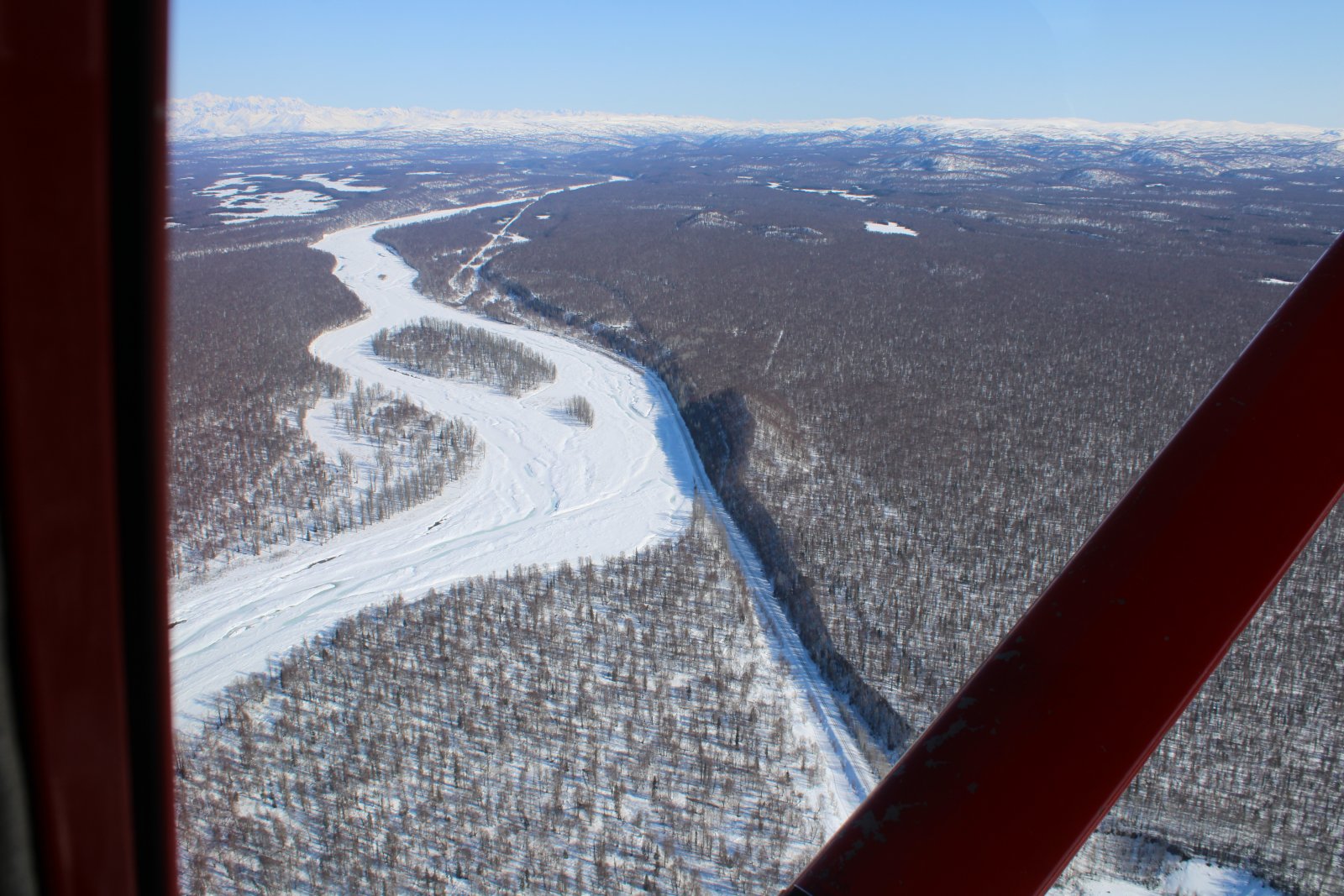
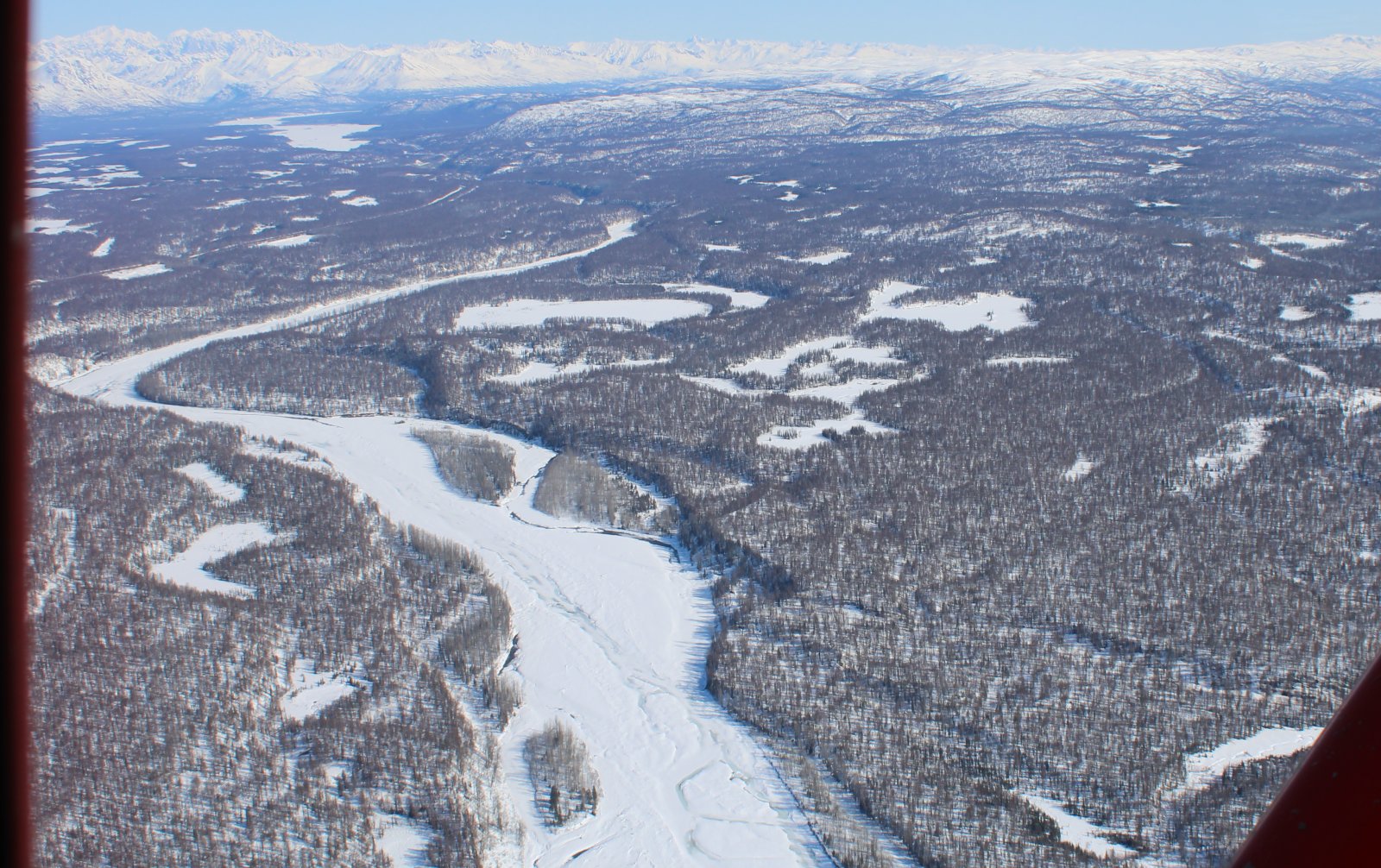
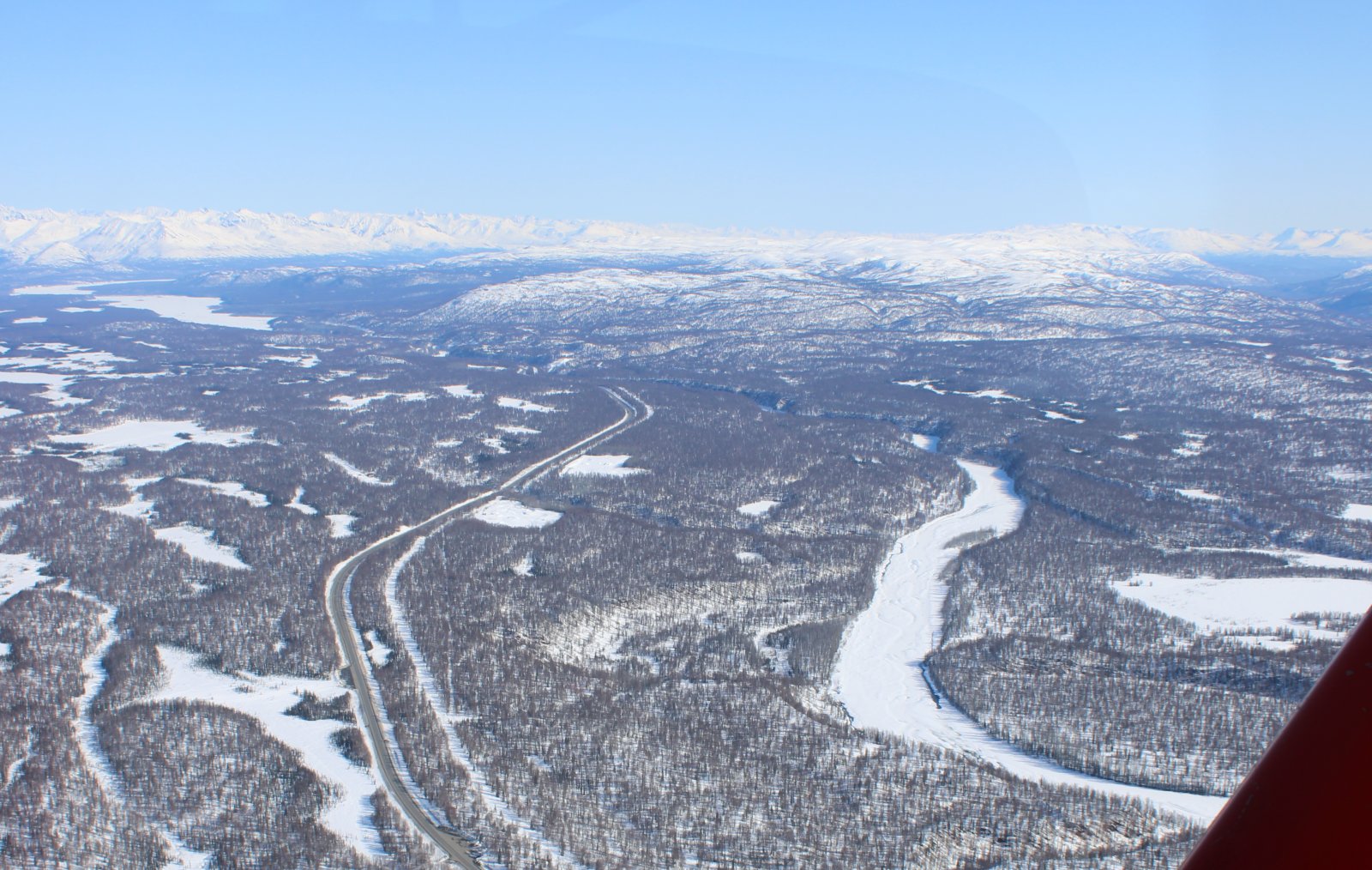
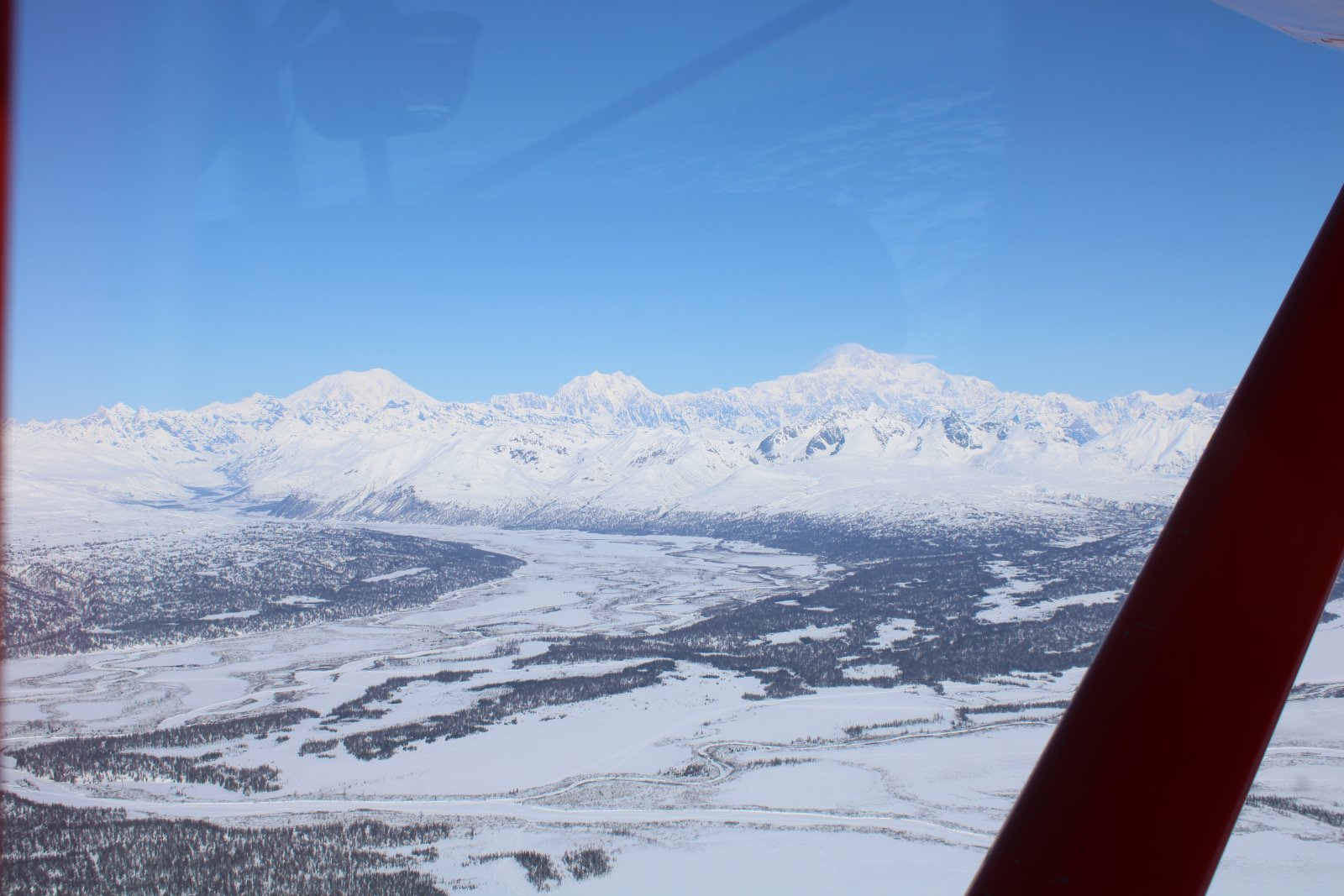
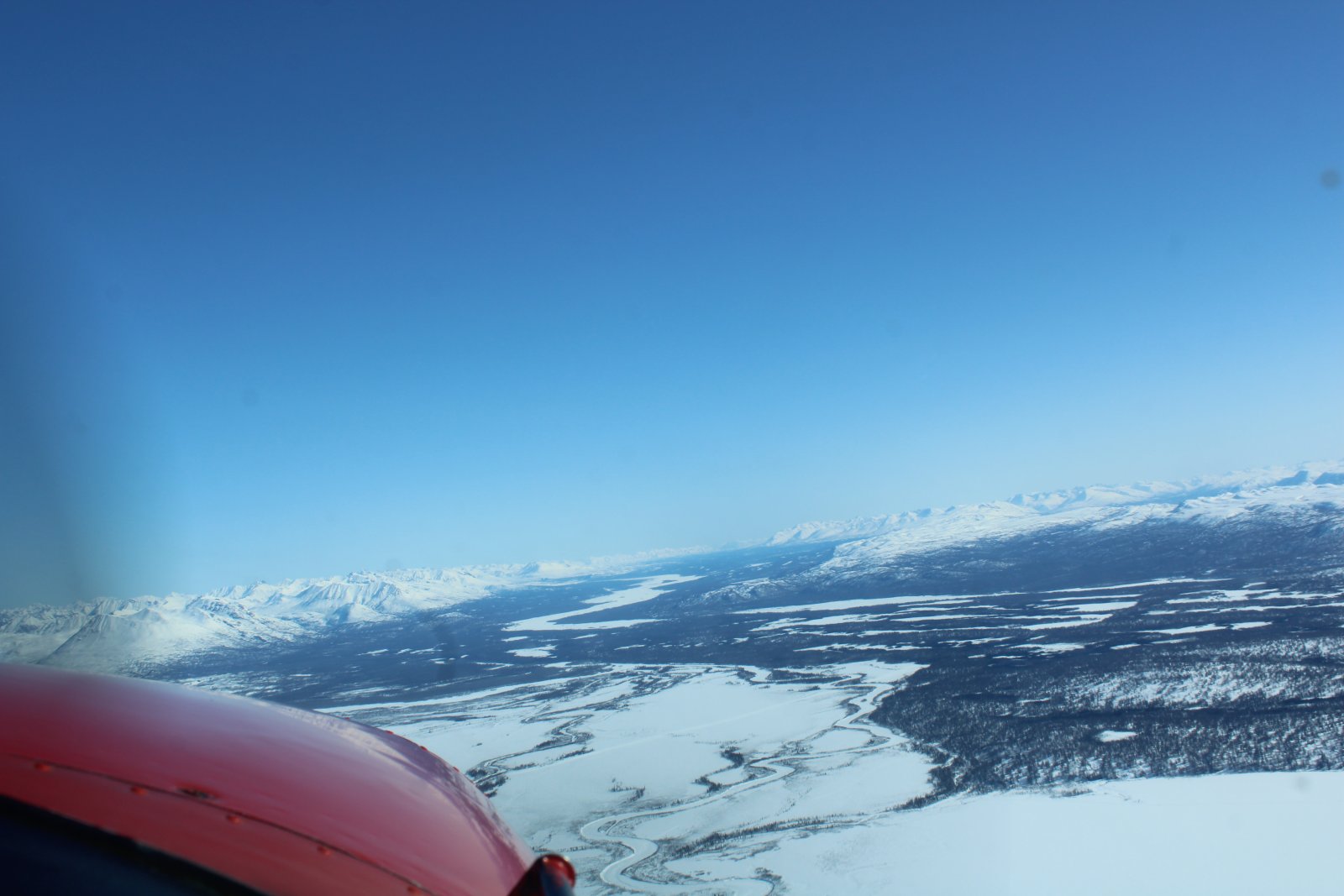
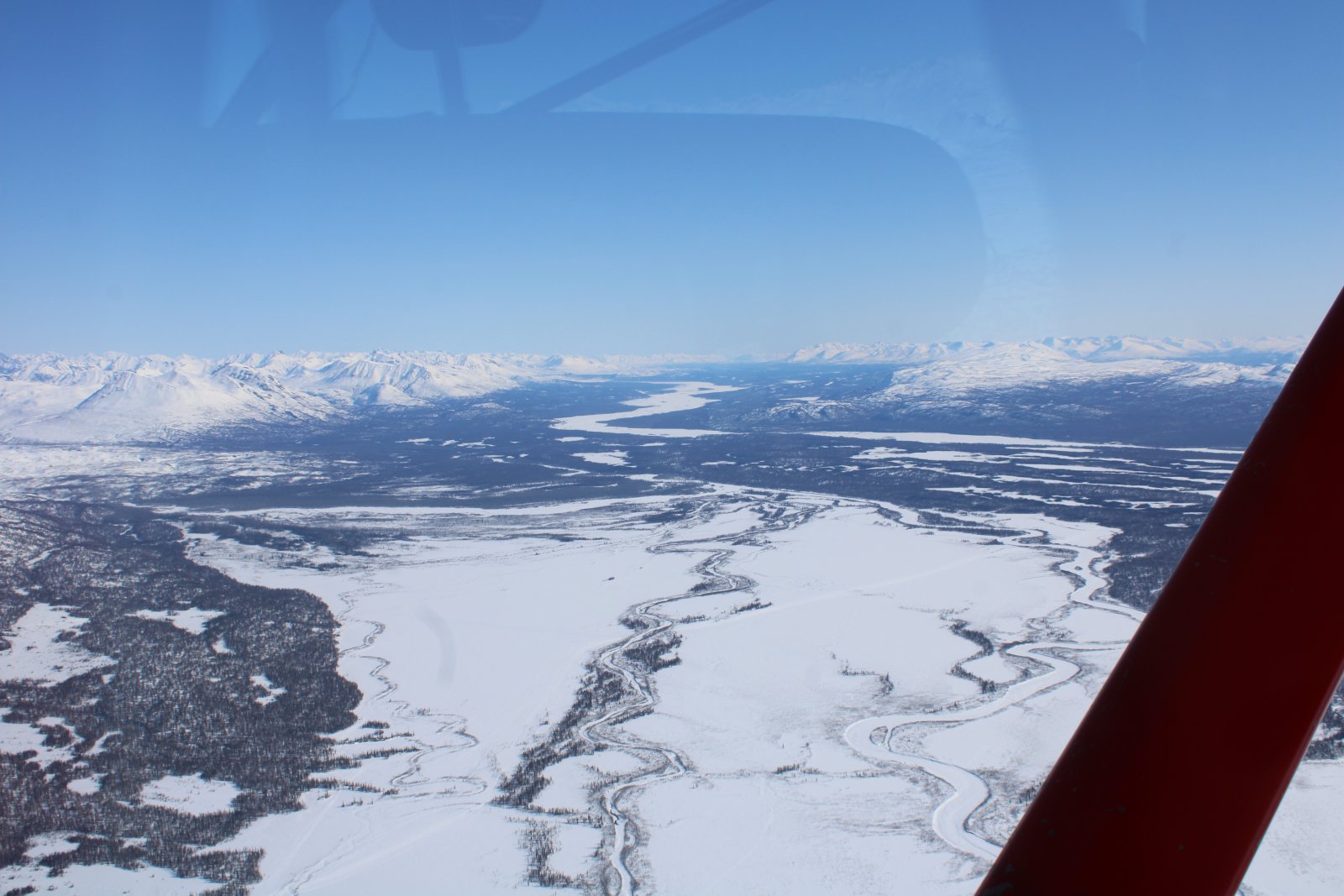

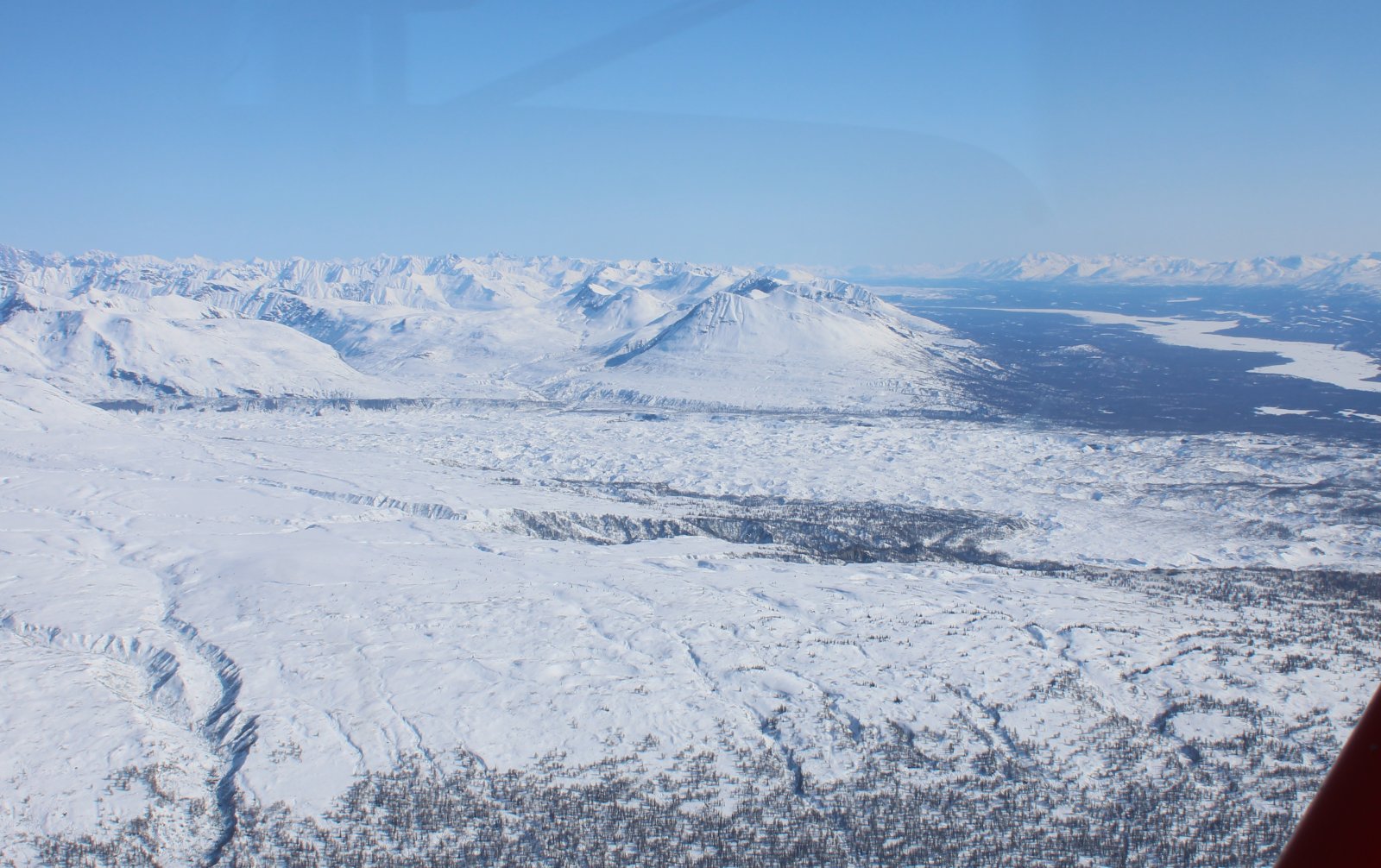
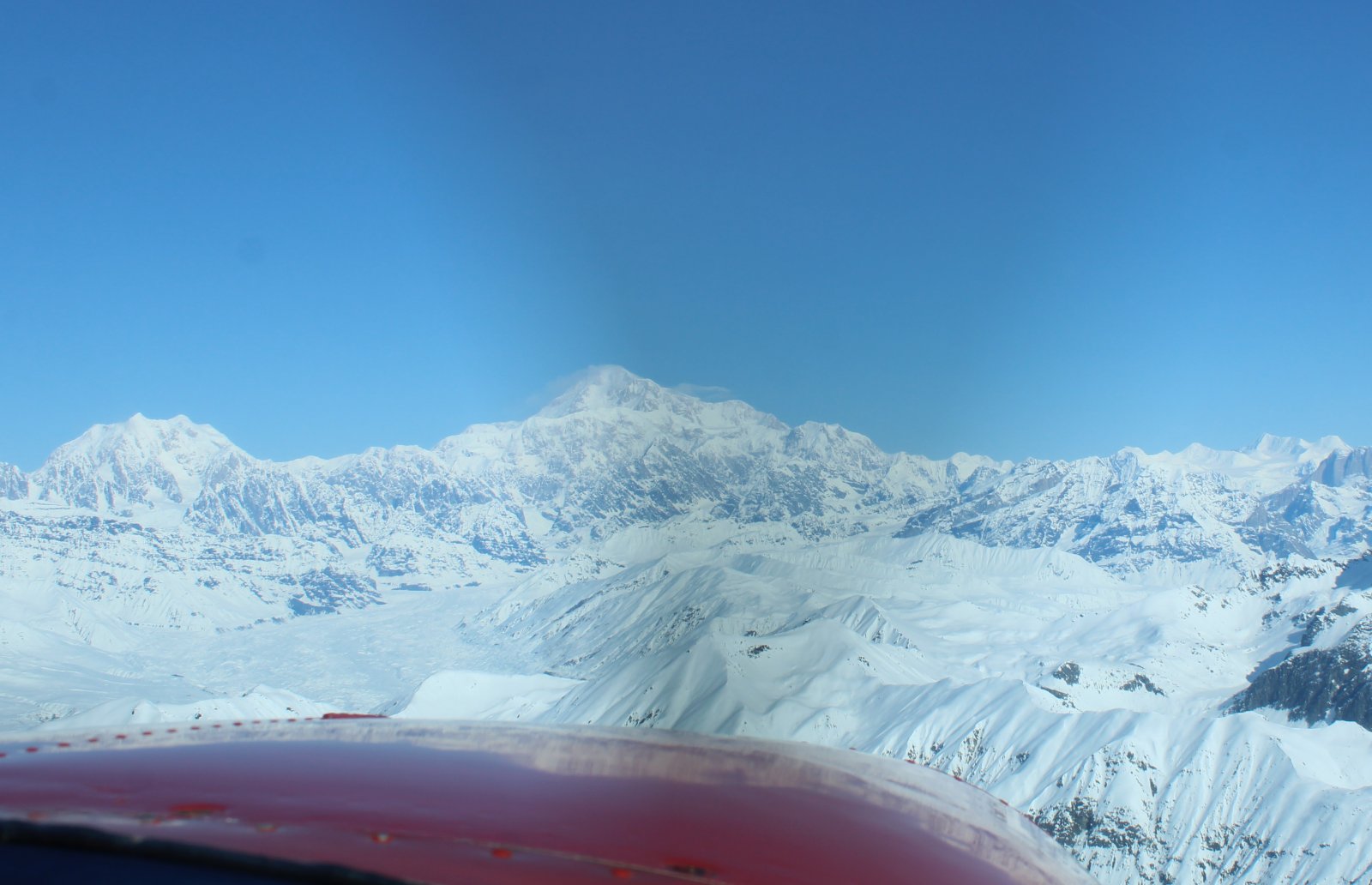
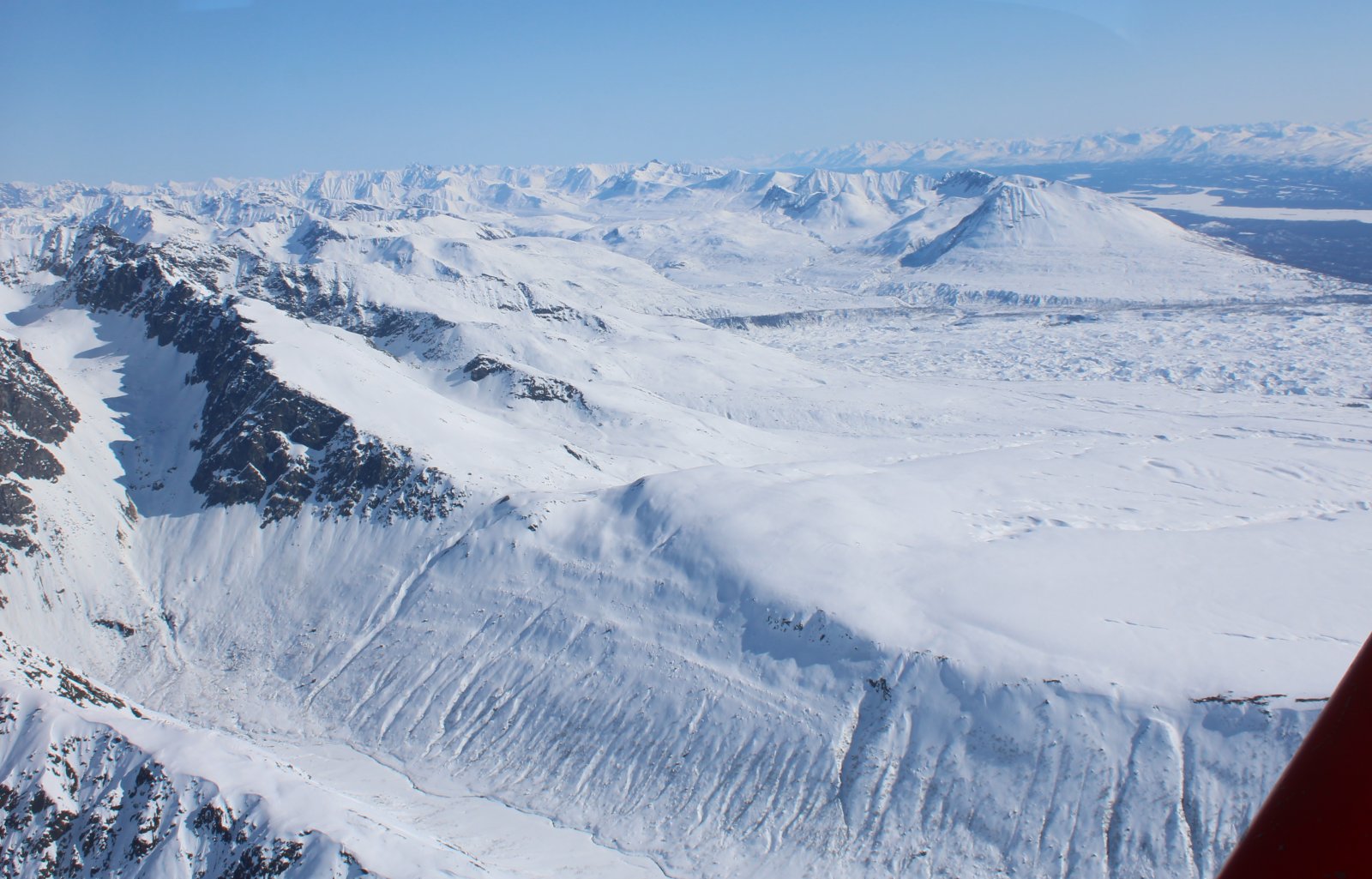
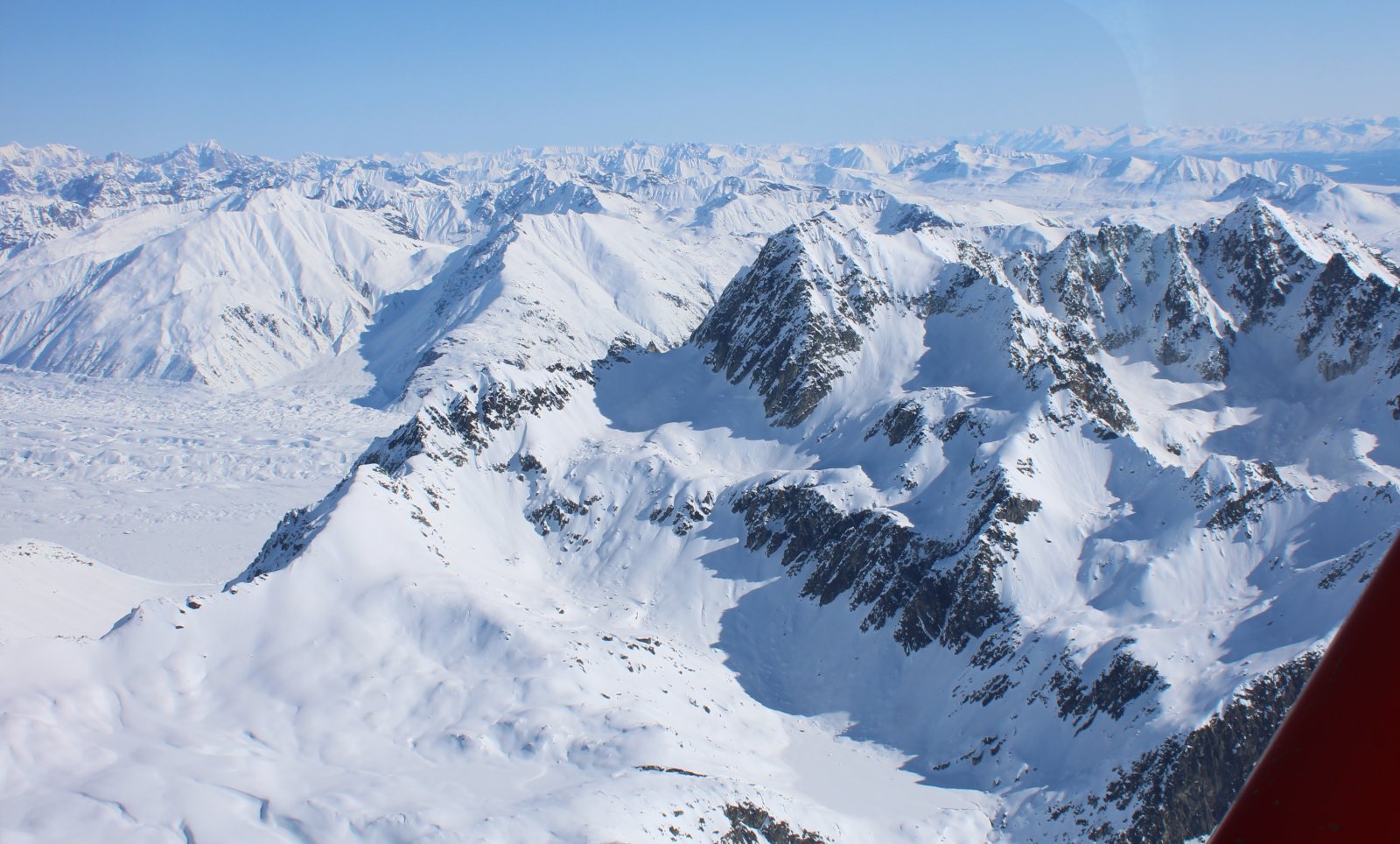

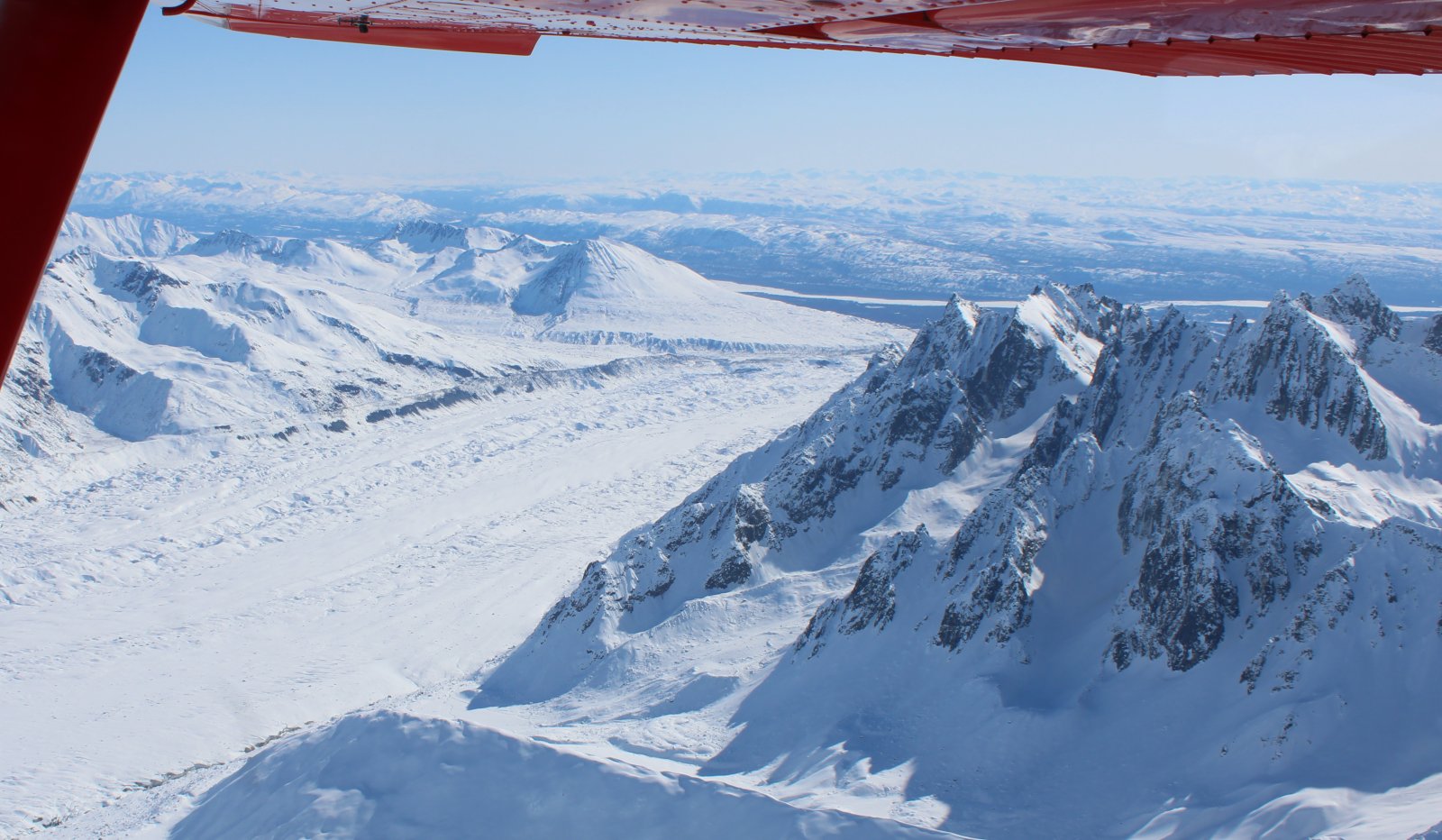
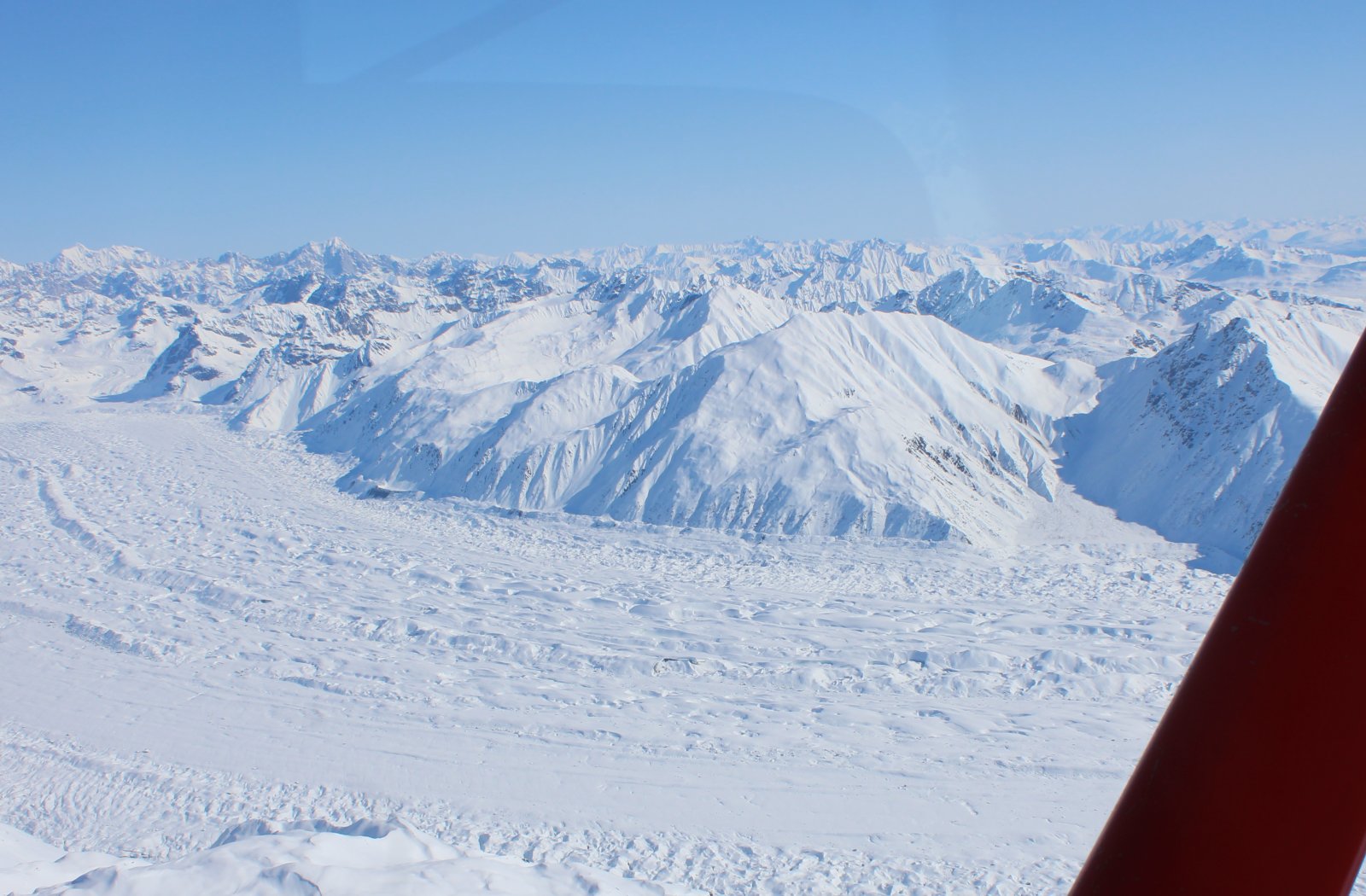
Denali with Mt. Hunter to the left.
The Koyukon people who inhabit the area around the mountain have referred to the peak as "Denali" for centuries. In 1896, a gold prospector named it "Mount McKinley" in support of then-presidential candidate William McKinley; that name was the official name recognized by the federal government of the United States from 1917 until 2015. In August 2015, 40 years after Alaska had done so, the United States Department of the Interior announced the change of the official name of the mountain to Denali.
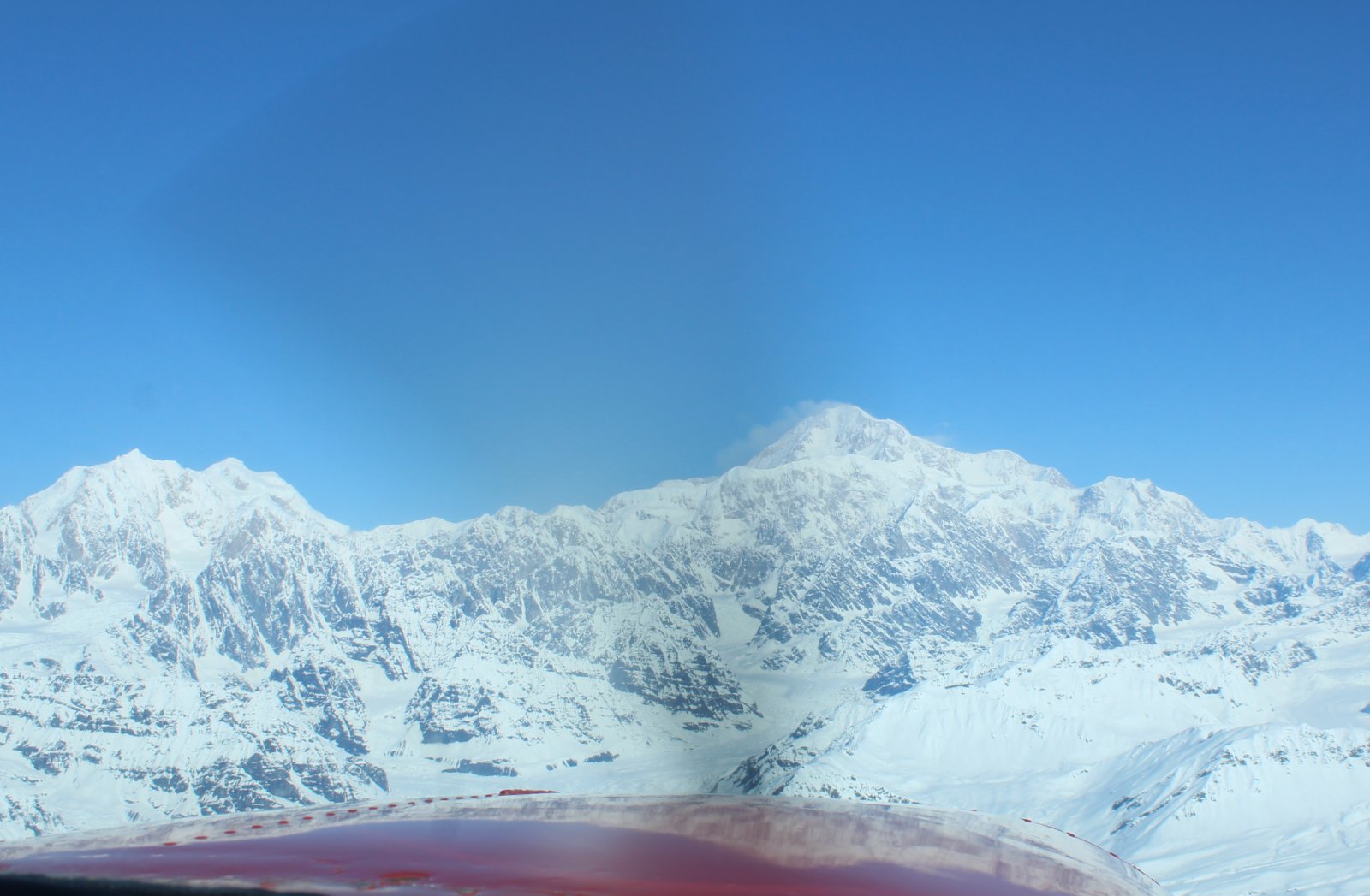

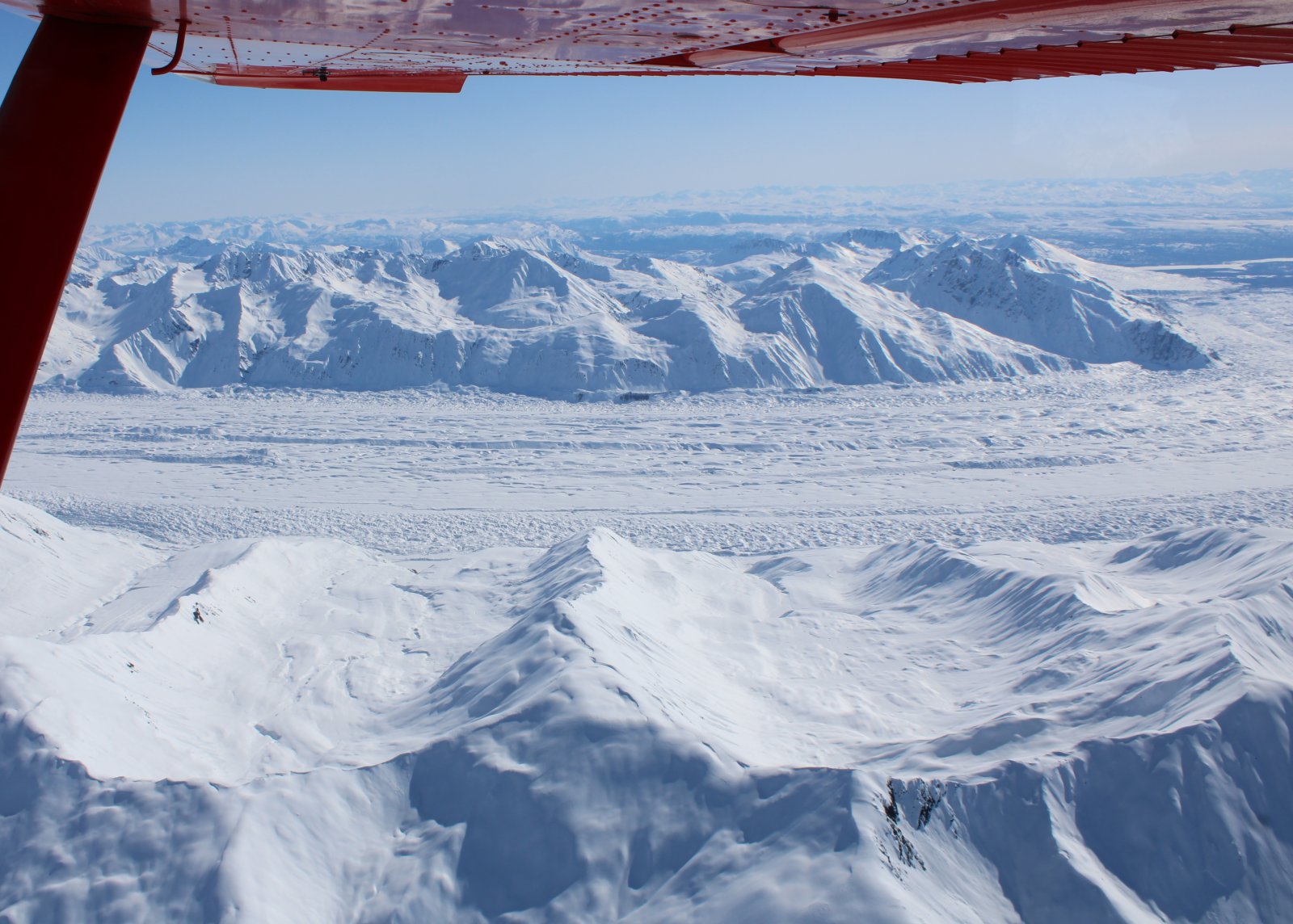
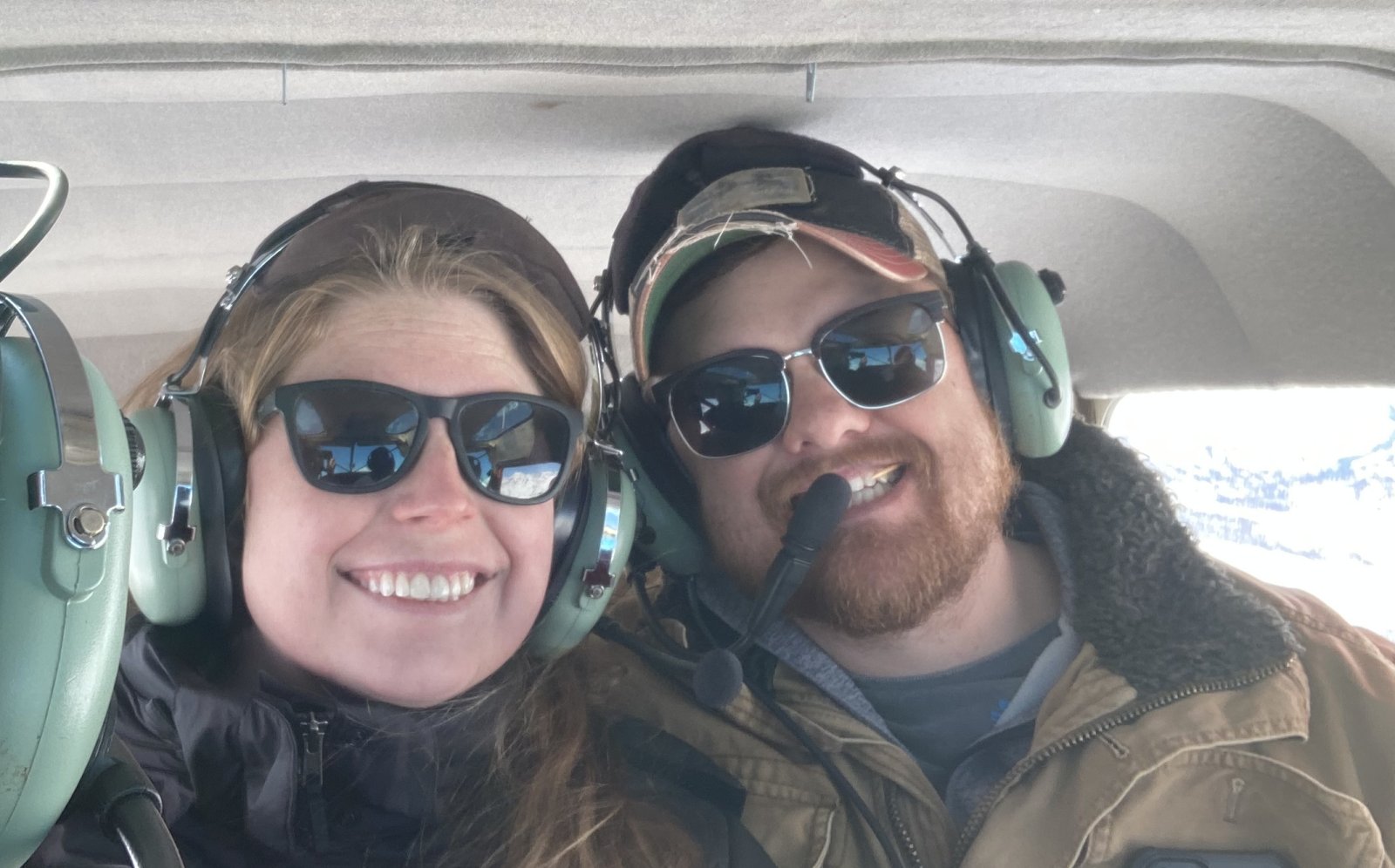
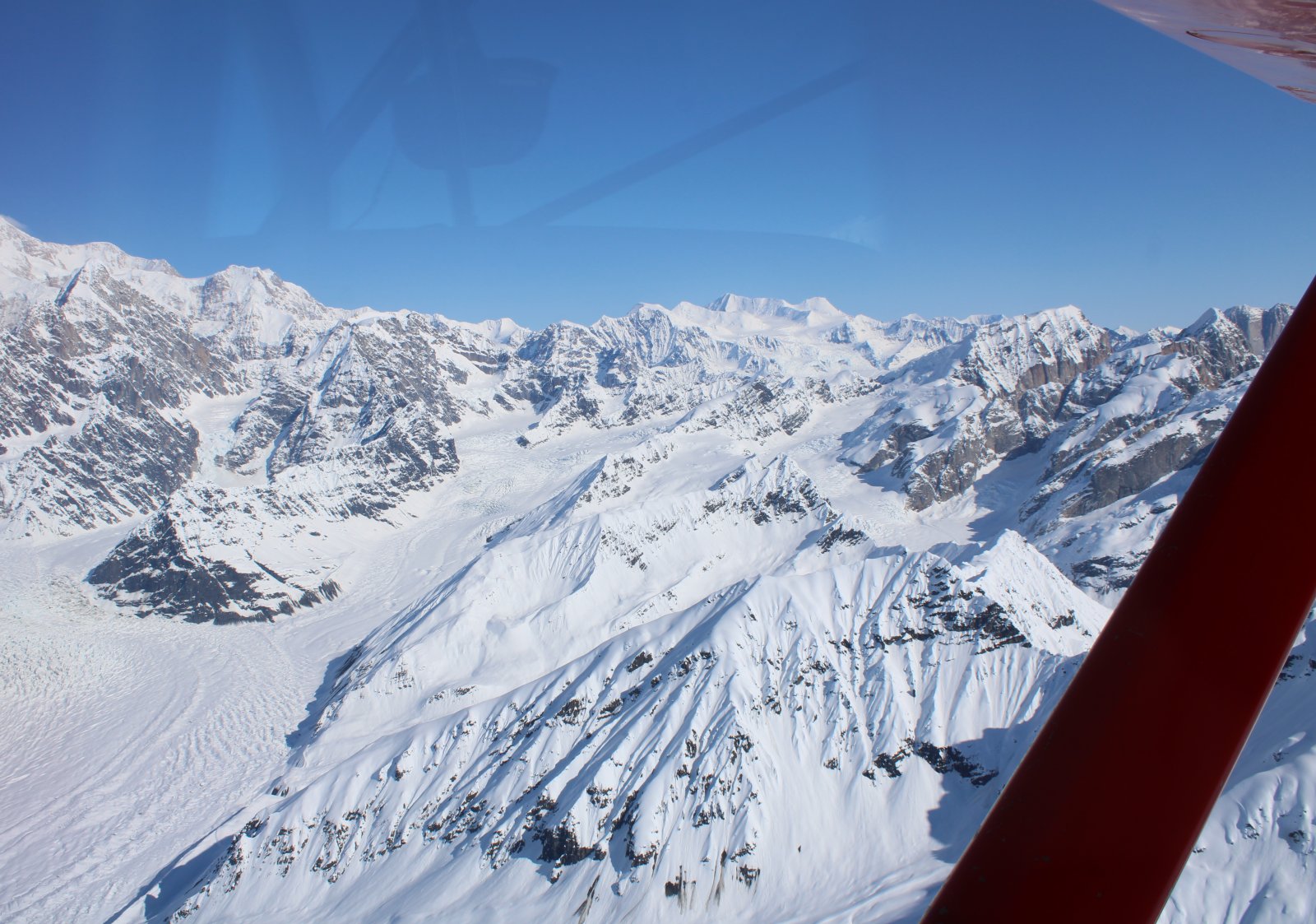
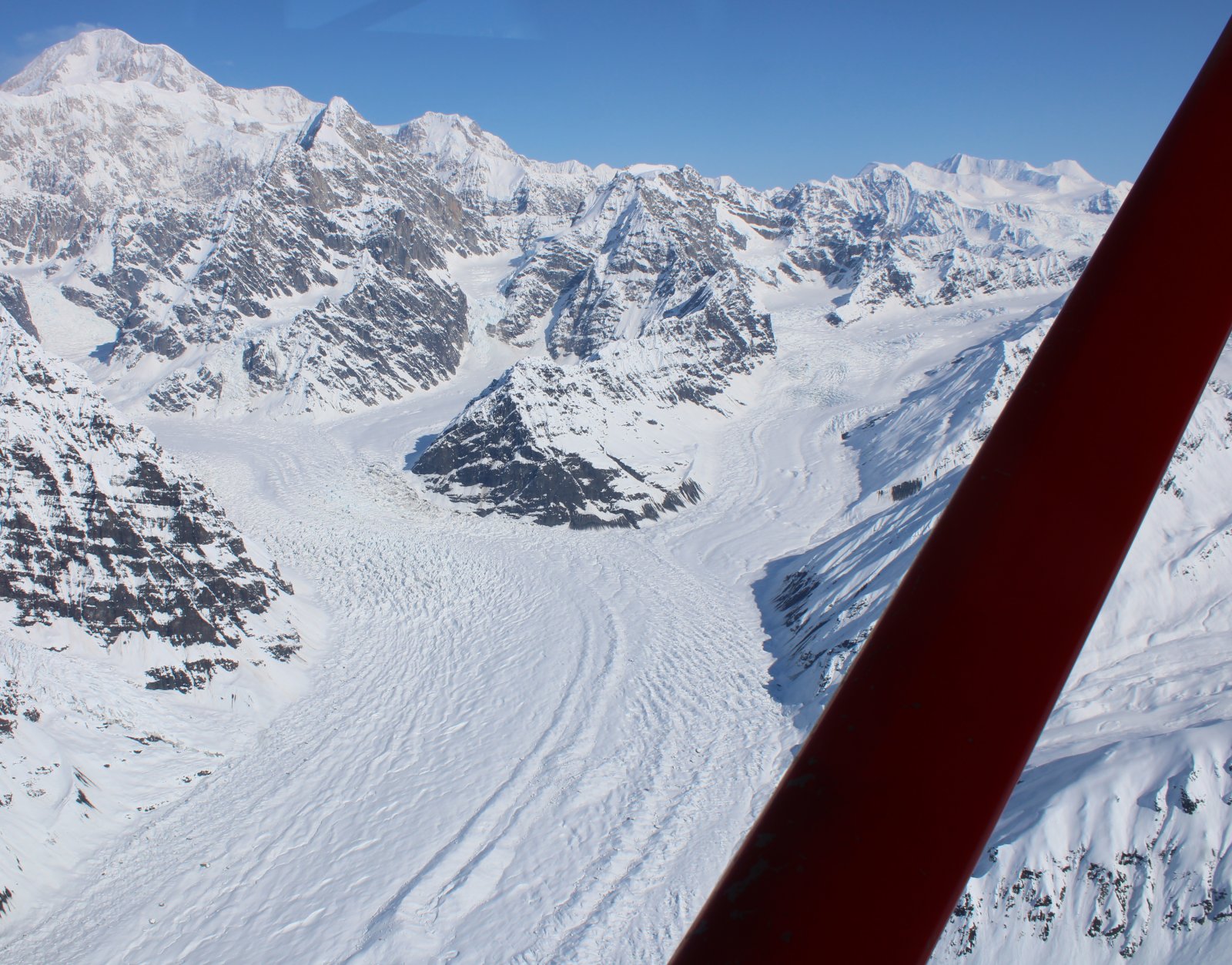
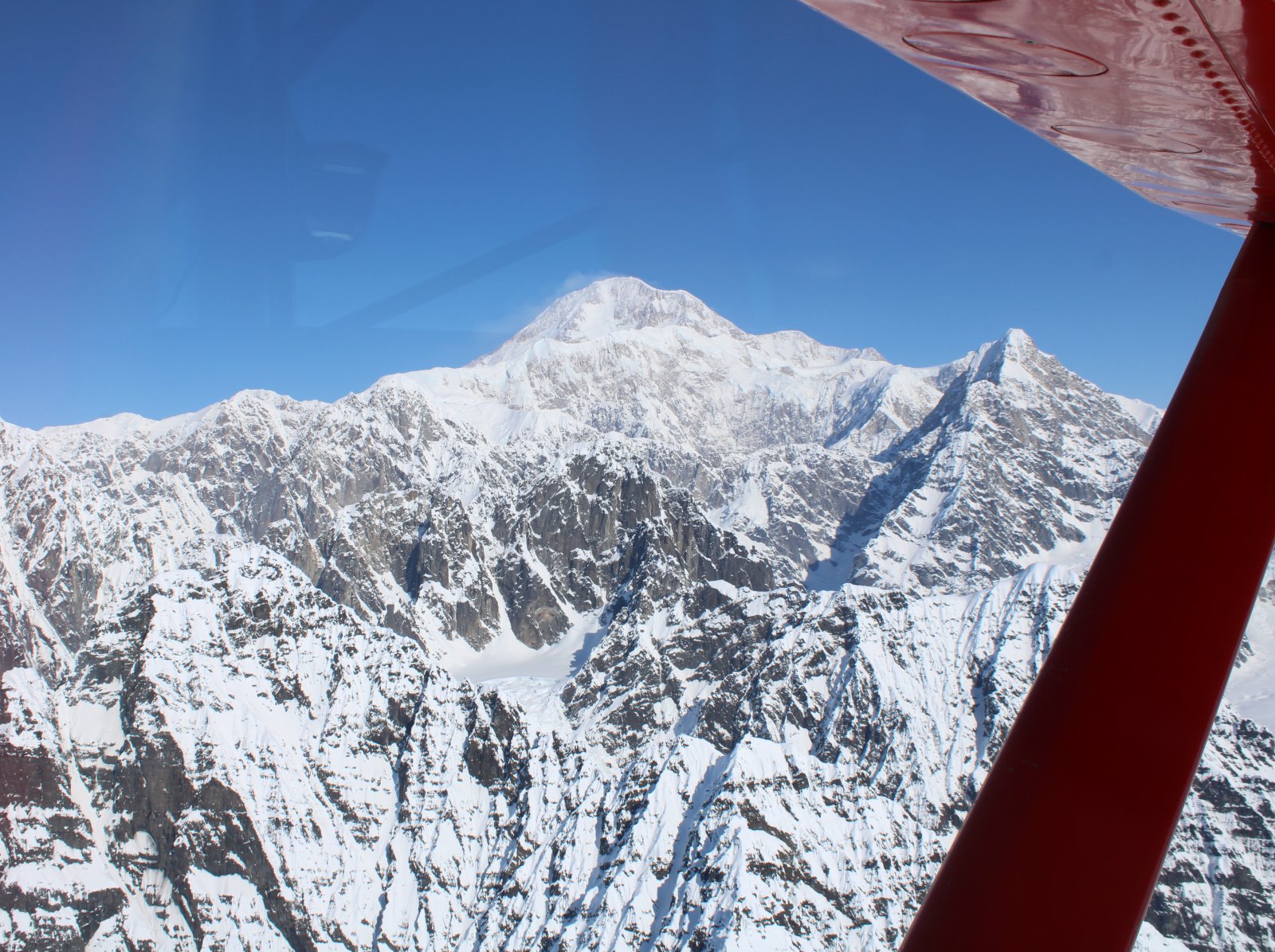
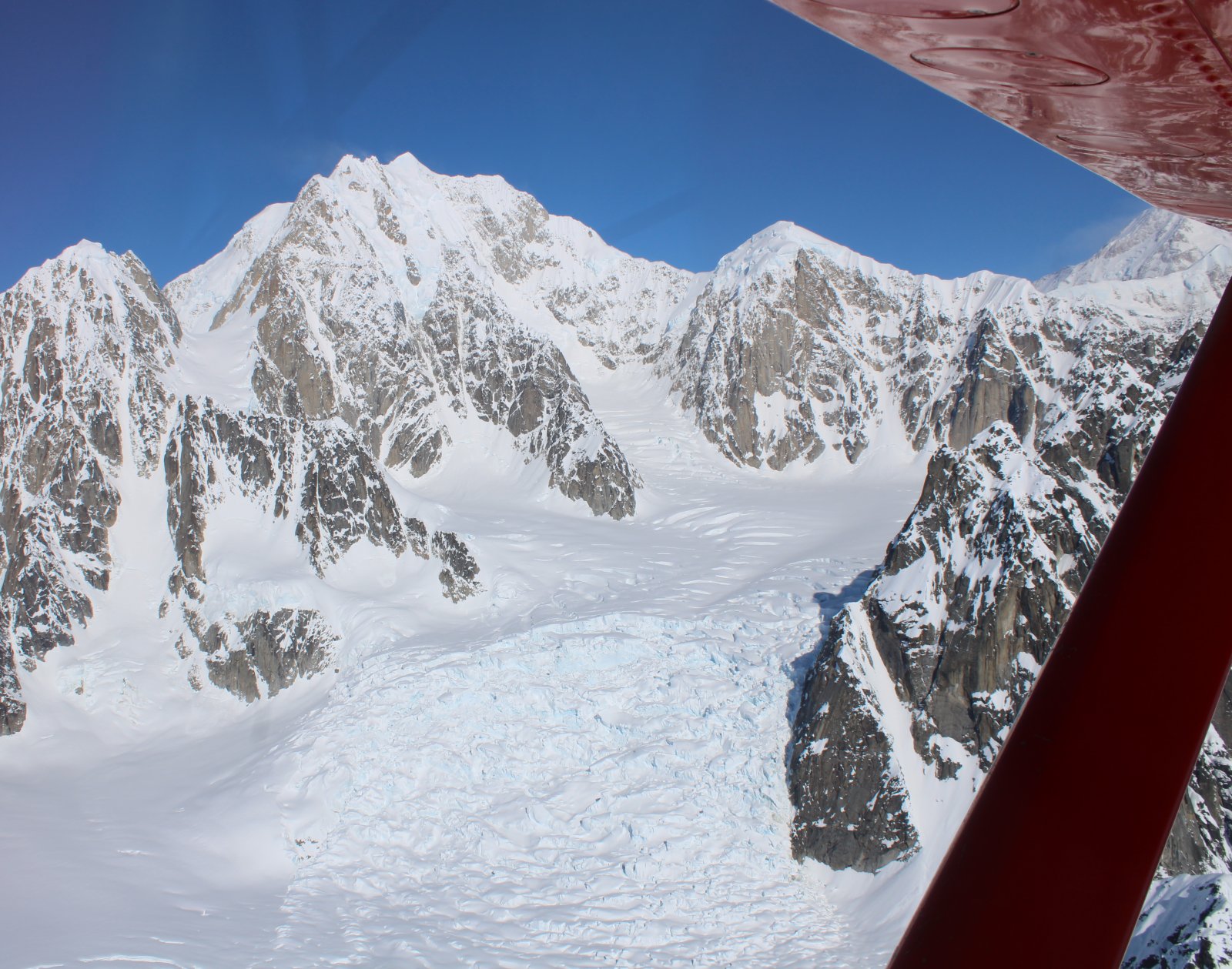

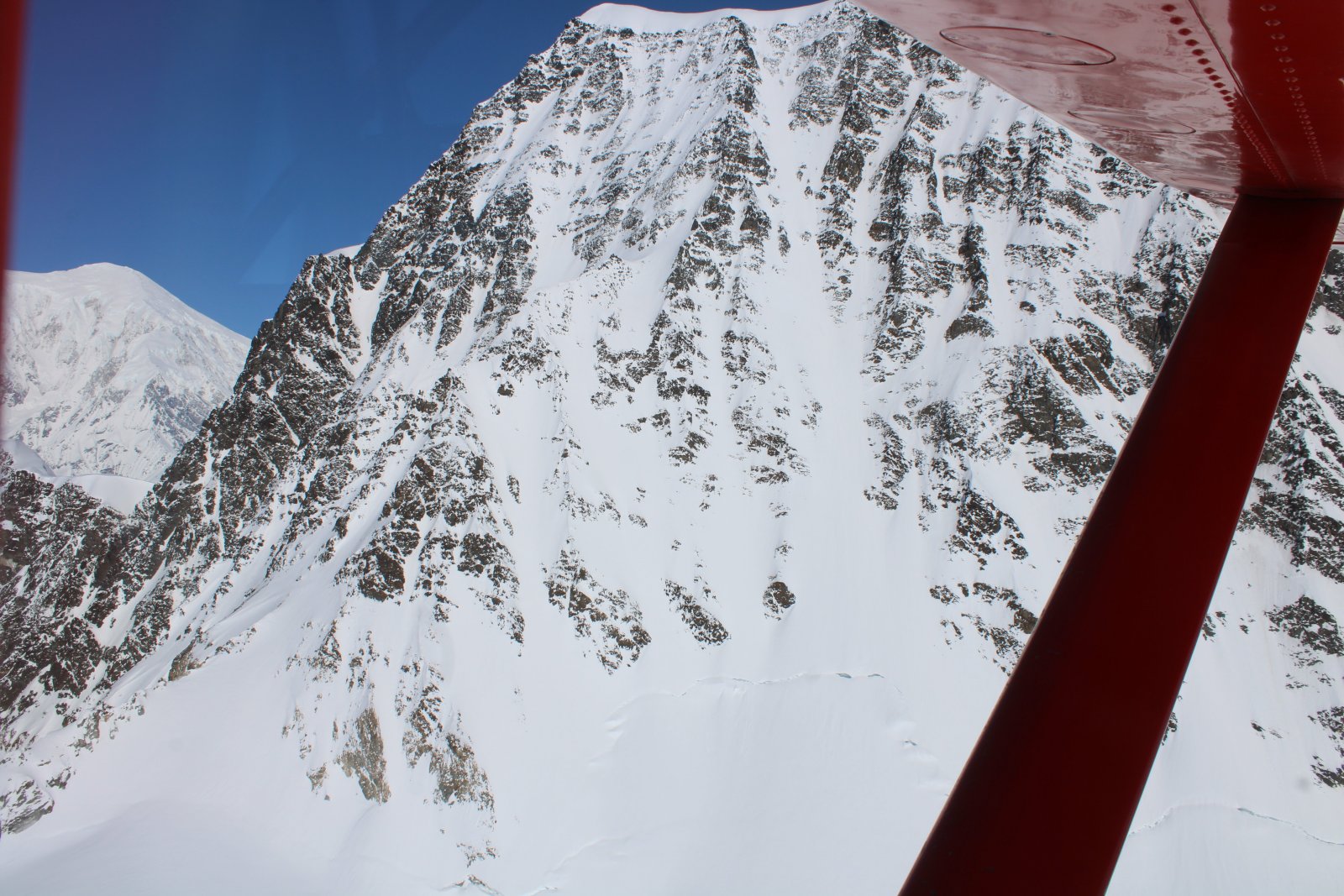
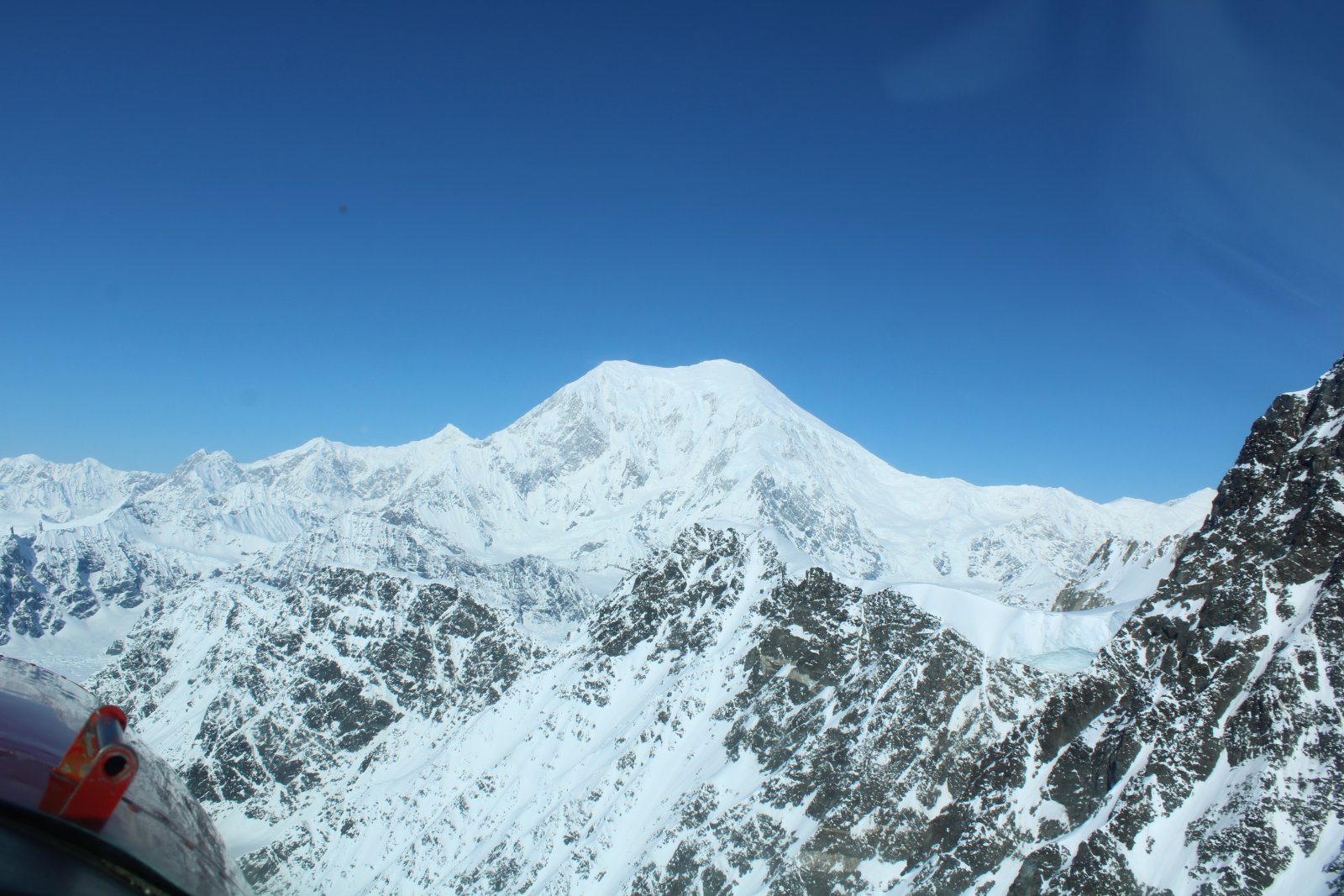
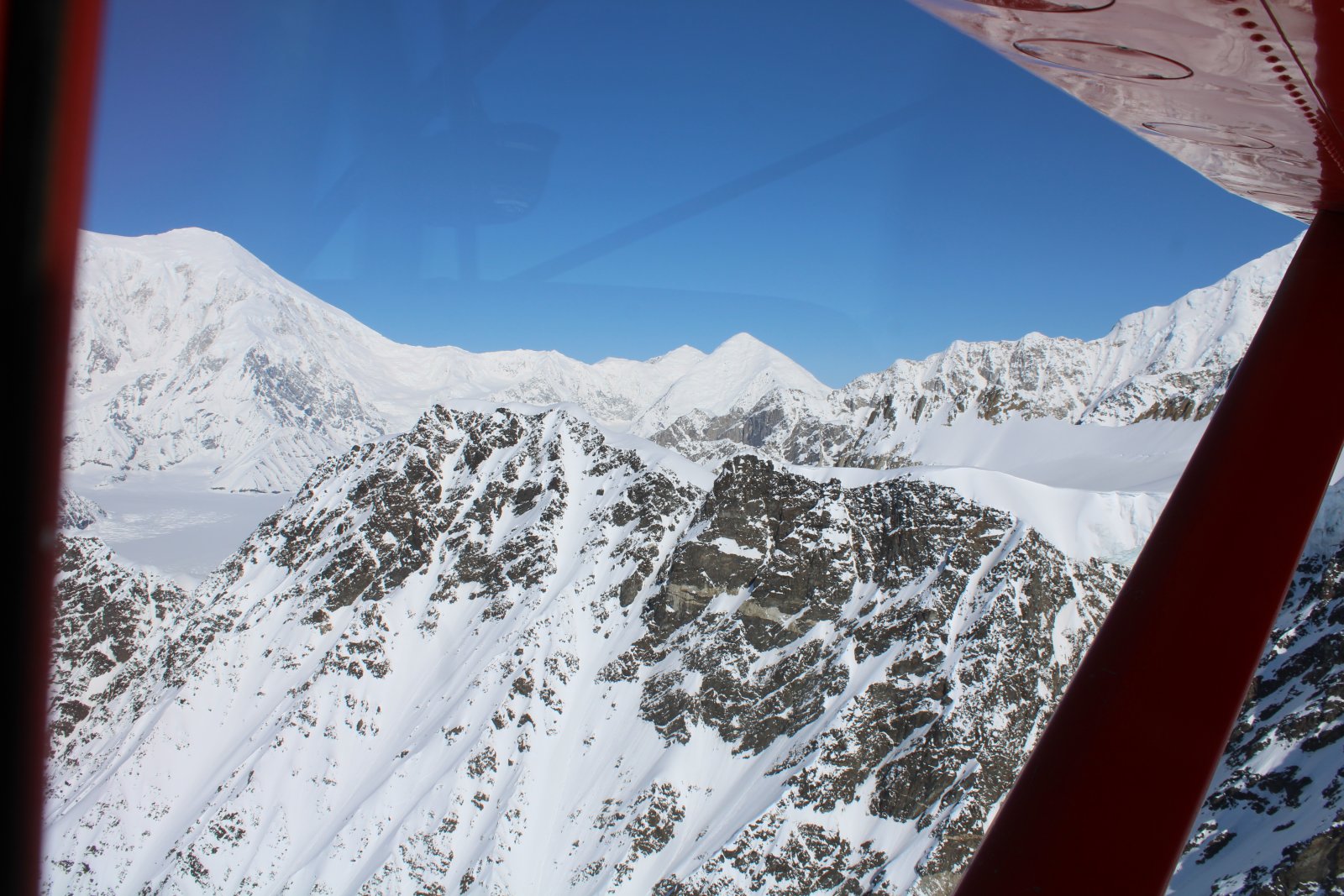
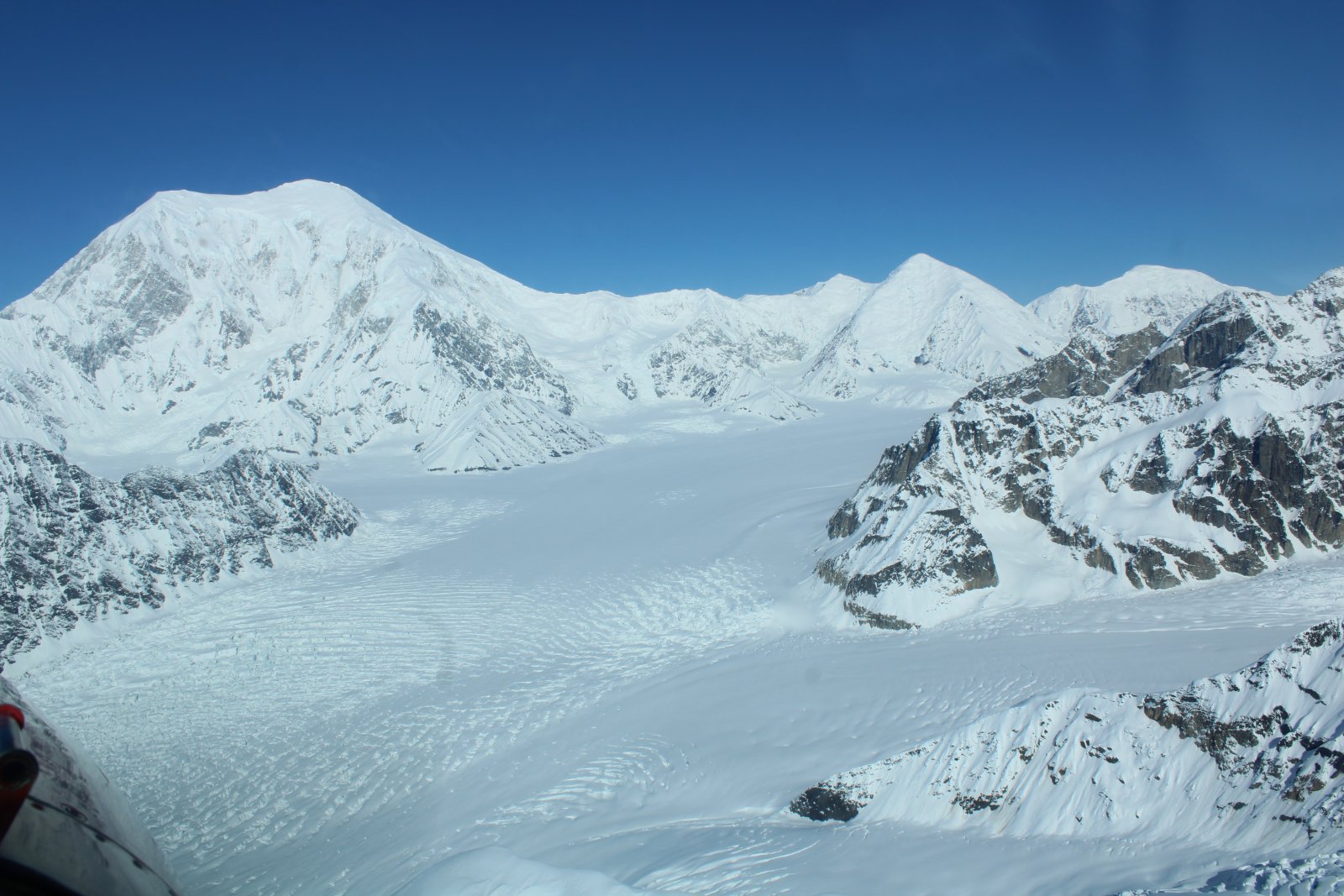
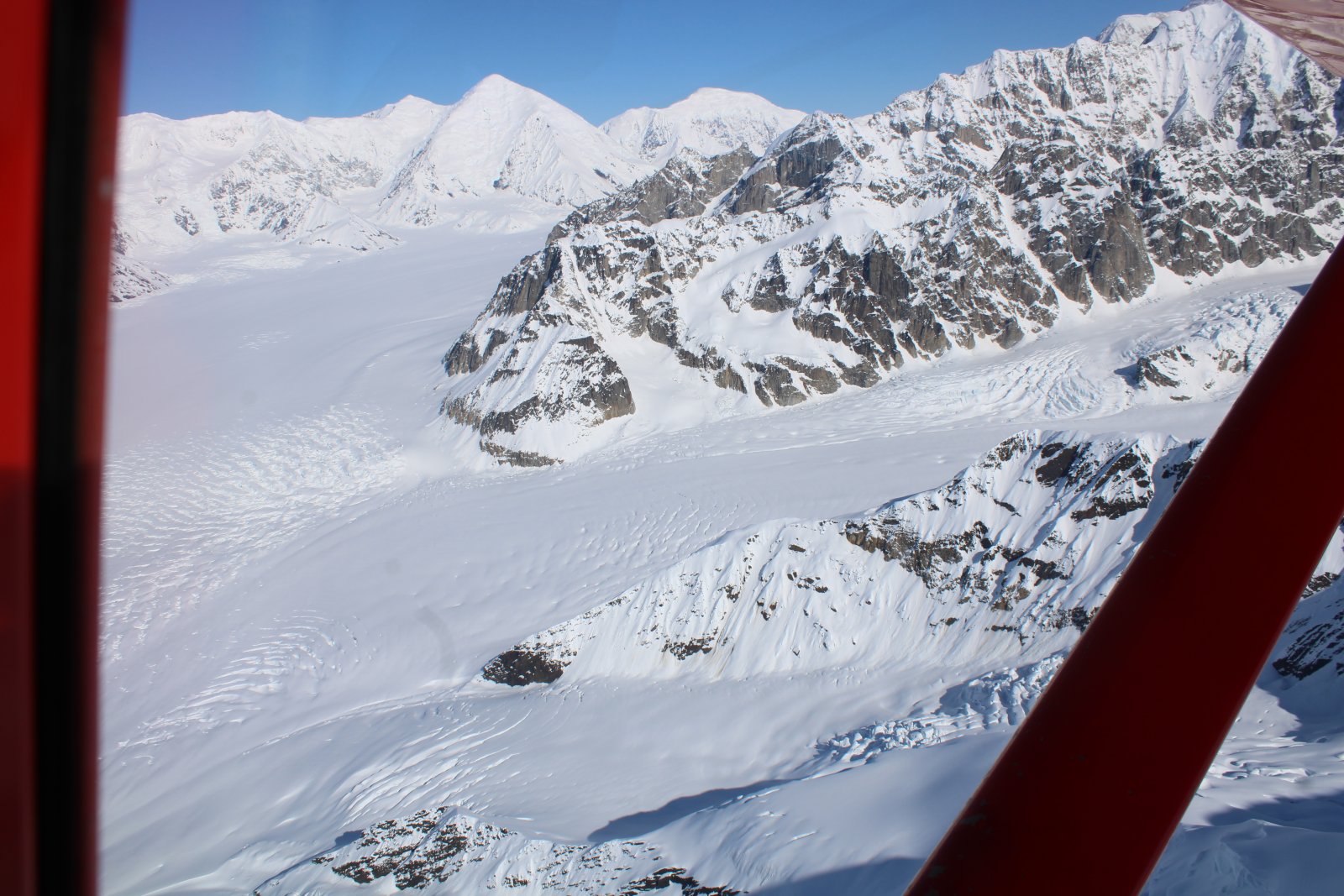

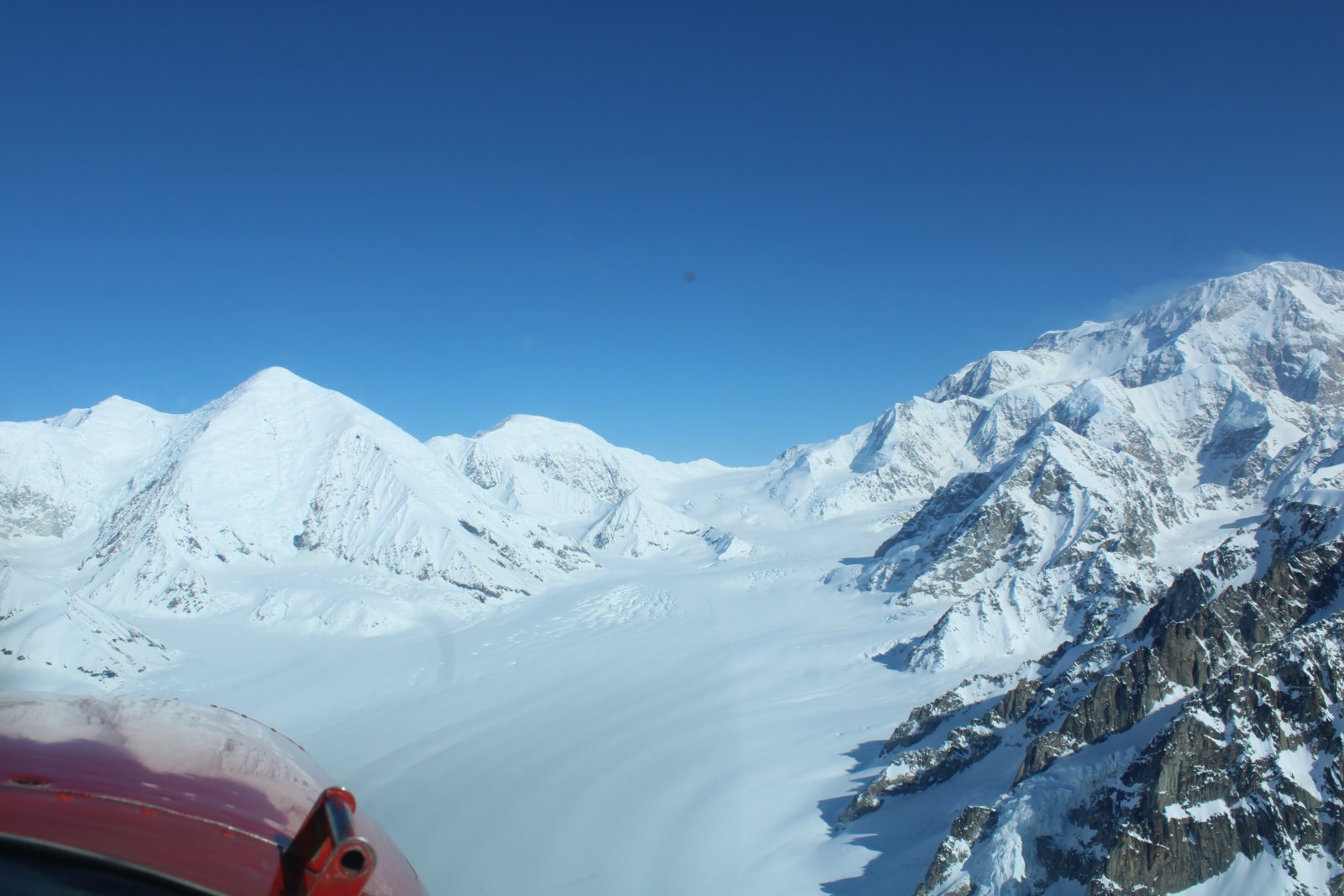
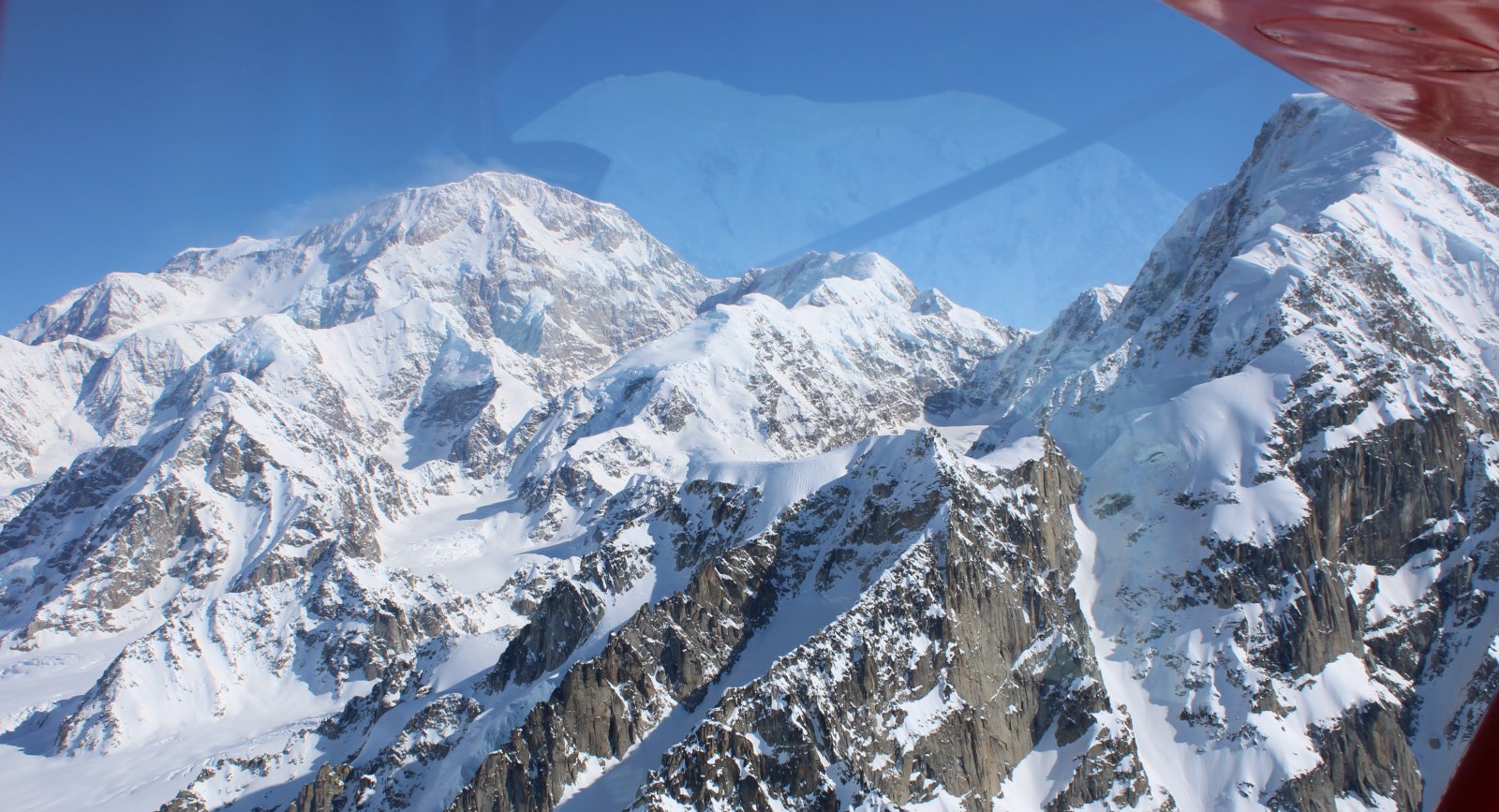
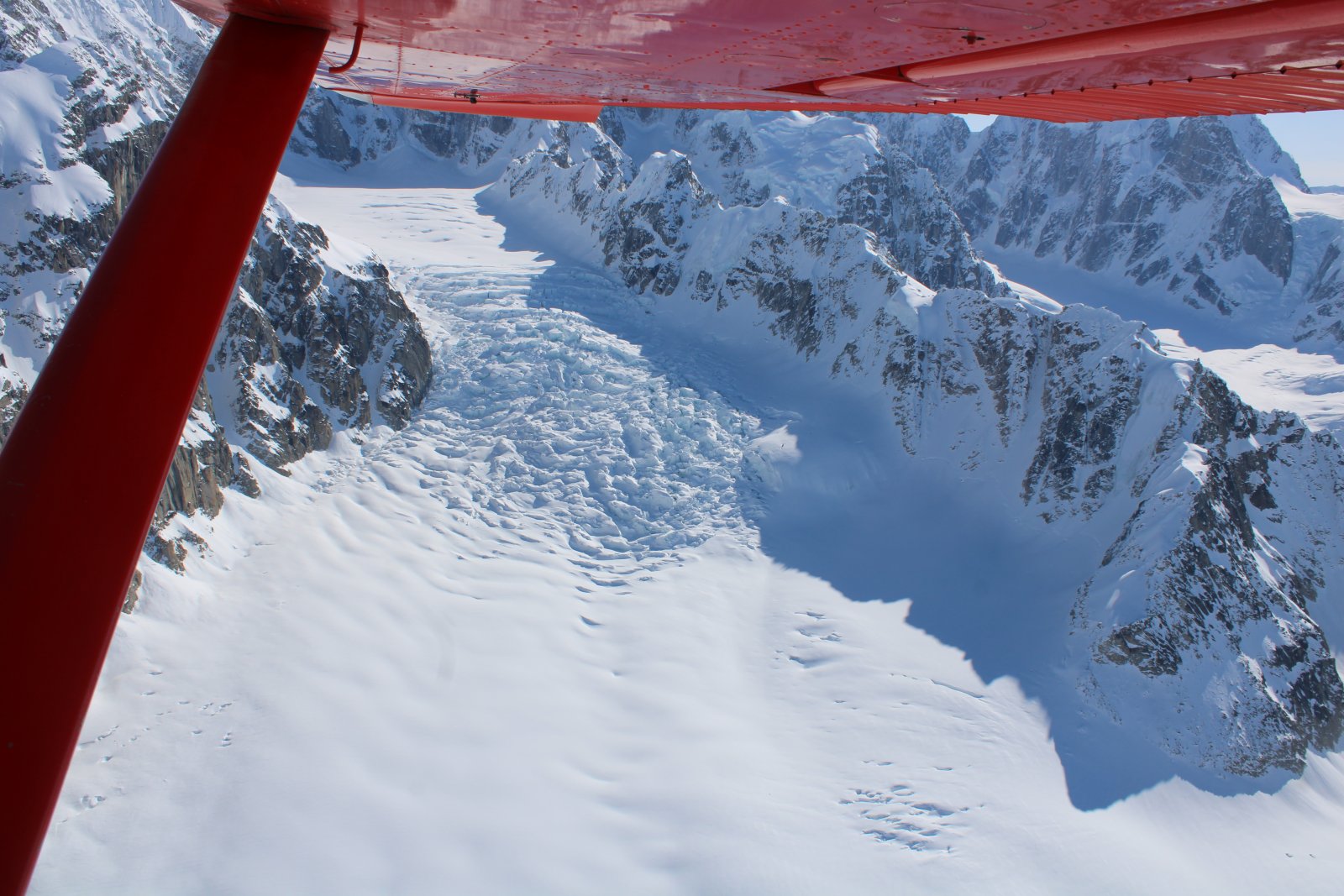
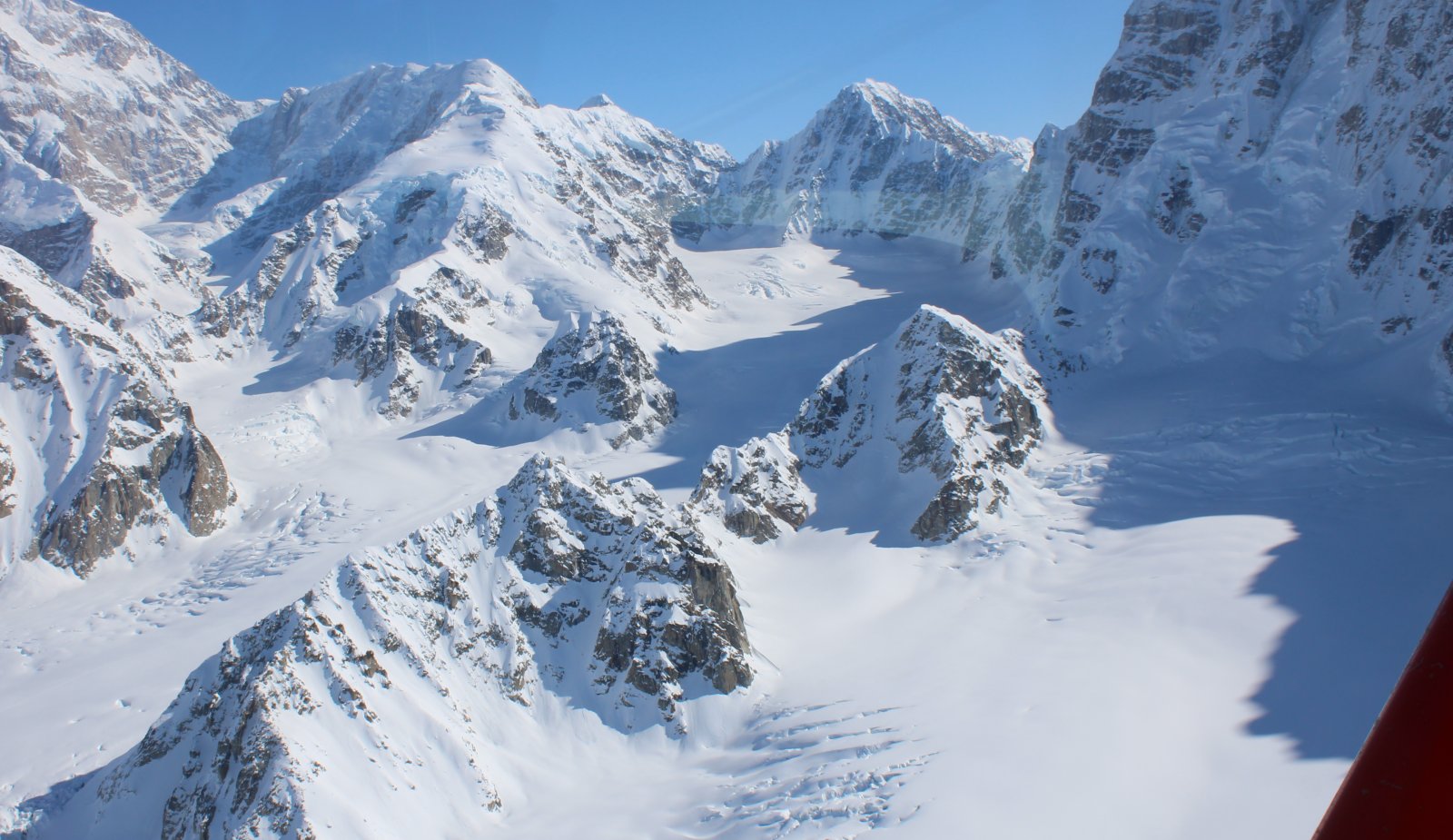
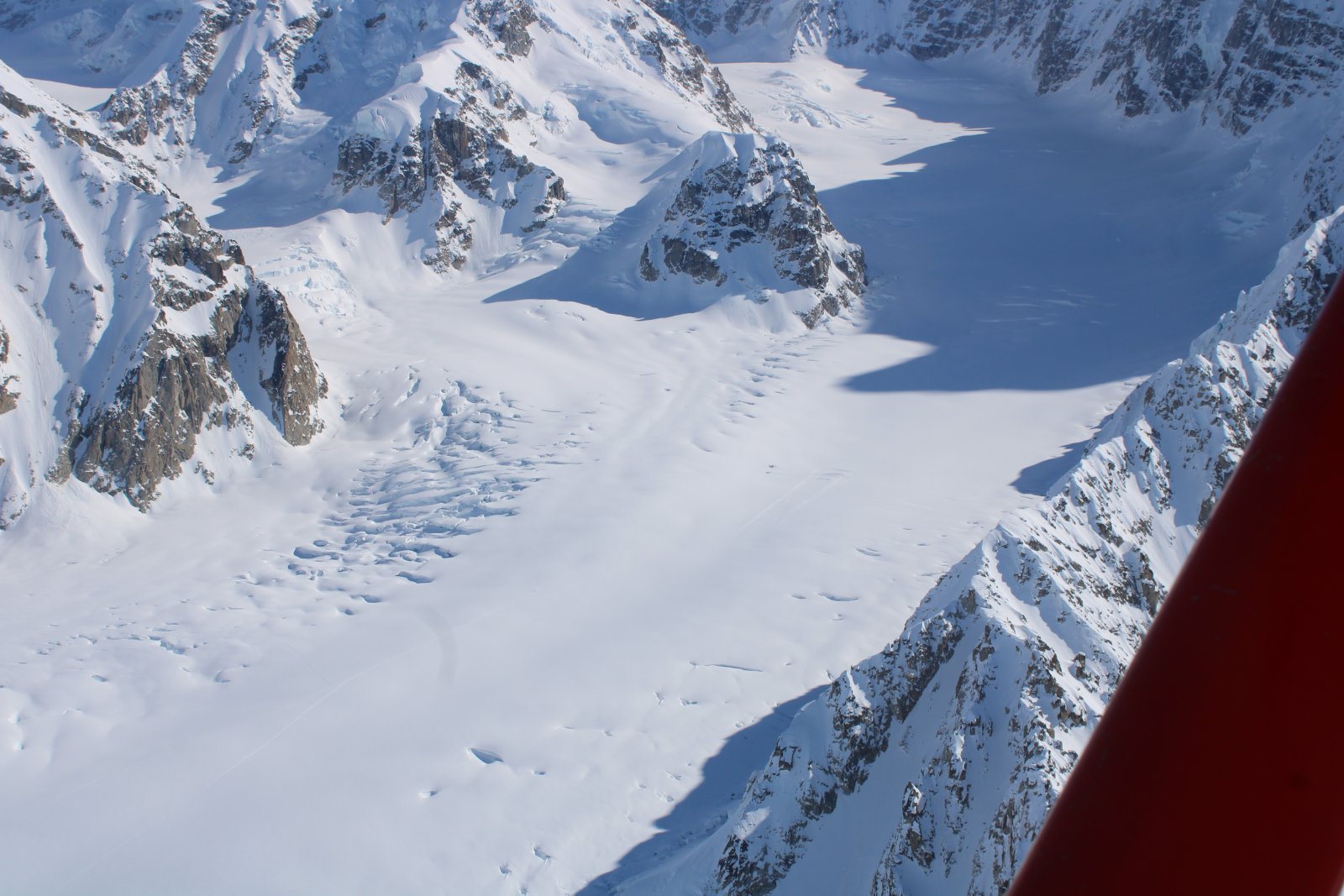
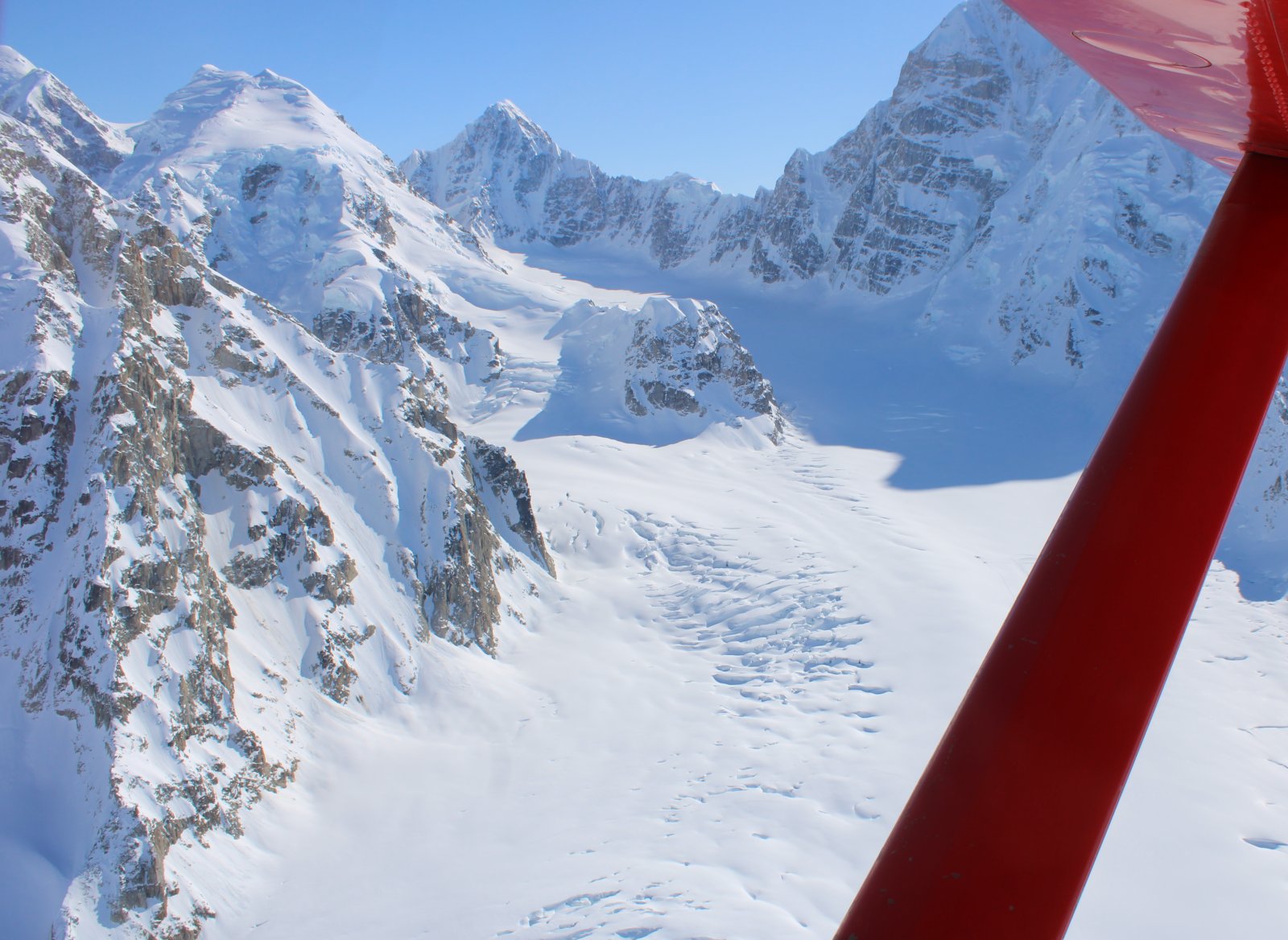
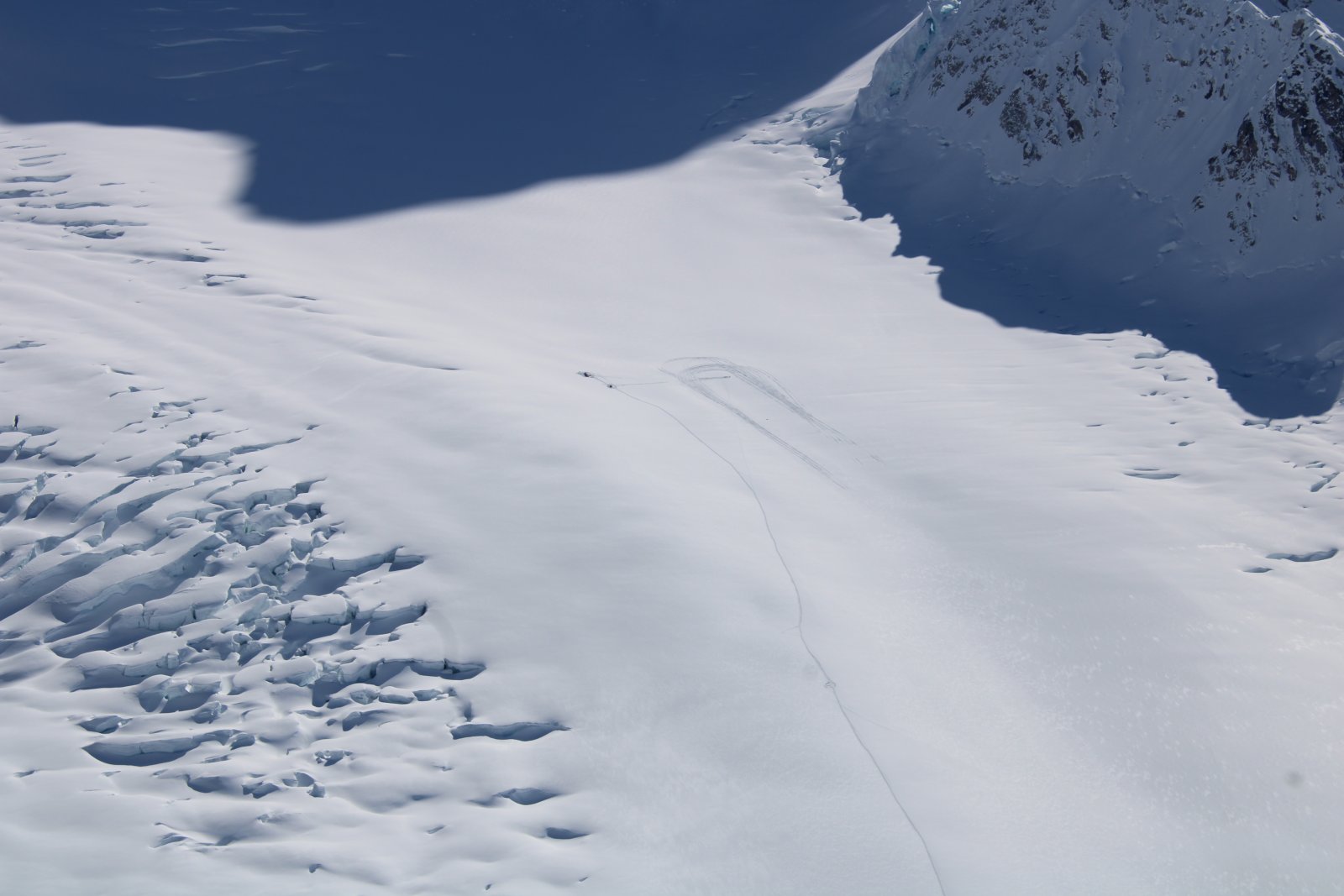
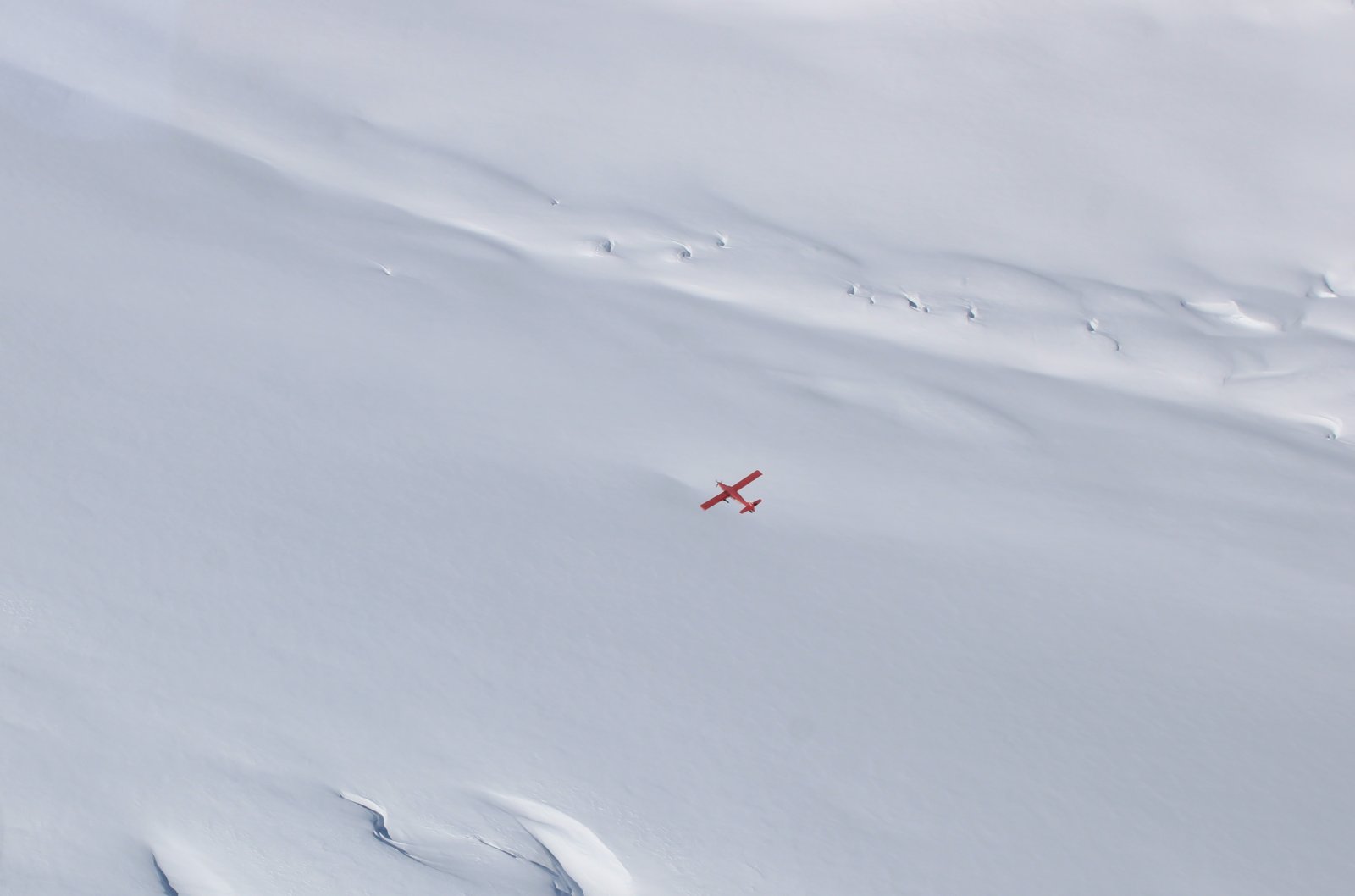
This is as close to Denali as we're gonna get.
In 1903, James Wickersham recorded the first attempt at climbing Denali, which was unsuccessful. In 1906, Frederick Cook claimed the first ascent, but this ascent is unverified and its legitimacy questioned. The first verifiable ascent to Denali's summit was achieved on June 7, 1913, by climbers Hudson Stuck, Harry Karstens, Walter Harper, and Robert Tatum, who went by the South Summit. In 1951, Bradford Washburn pioneered the West Buttress route, considered to be the safest and easiest route, and therefore the most popular currently in use.
The mountain is regularly climbed today, by about 1,200 people a year. In 2003, around 58% of climbers reached the top. But by that time, the mountain had claimed the lives of nearly 100 mountaineers. The vast majority of climbers use the West Buttress Route, pioneered in 1951 by Bradford Washburn, after an extensive aerial photographic analysis of the mountain. Climbers typically take two to four weeks to ascend Denali.

Total horizontal length of the West Buttress route is approximately 13 miles with about 13,500 ft of vertical gain. Between base camp and 11,000 ft, the route is relatively flat and the main hazards are crevasse falls. Above 11,000 ft, the route steepens to moderate slopes (35-45 degrees) alternating with flat benches and bowls. Equipment and supplies are typically carried by sled to 11,000 ft. Above 11,000 ft, gear and food are usually ferried between camps in two trips.
West Buttress expeditions average around 21 days. A 2-3 day supply of food and fuel should be left at base camp in case weather prevents planes from landing on the glacier (climbers have been stranded for as long as 2 weeks due to inclement weather). The following is a sample West Buttress itinerary during good weather.
Day 1: Land at Base Camp 7,200 ft.
Day 2: Rest day to organize gear and practice crevasse rescue
Day 3: Move to 7,800 ft camp
Day 4: Move to 9,500 ft camp
Day 5: Move to 11,000 ft camp
Day 6: Rest day
Day 7: Ferry loads to 14,200 ft camp, return to 11,000 ft camp
Day 8: Move to 14,200 ft camp
Day 9: Rest day
Day 10: Ferry loads to 17,200 ft camp, return to 14,200 ft
Day 11: Rest day
Day 12: Move to 17,200 ft camp
Day 13: Summit day
Day 14: Descend to 11,000 ft camp
Day 15: Descend to base camp, fly out
Denali has a reputation for streaky weather with long periods of either continuous bad weather or long periods of good weather. This explains why inexperienced climbers may reach the summit while veteran climbers don't make it back from their climb.

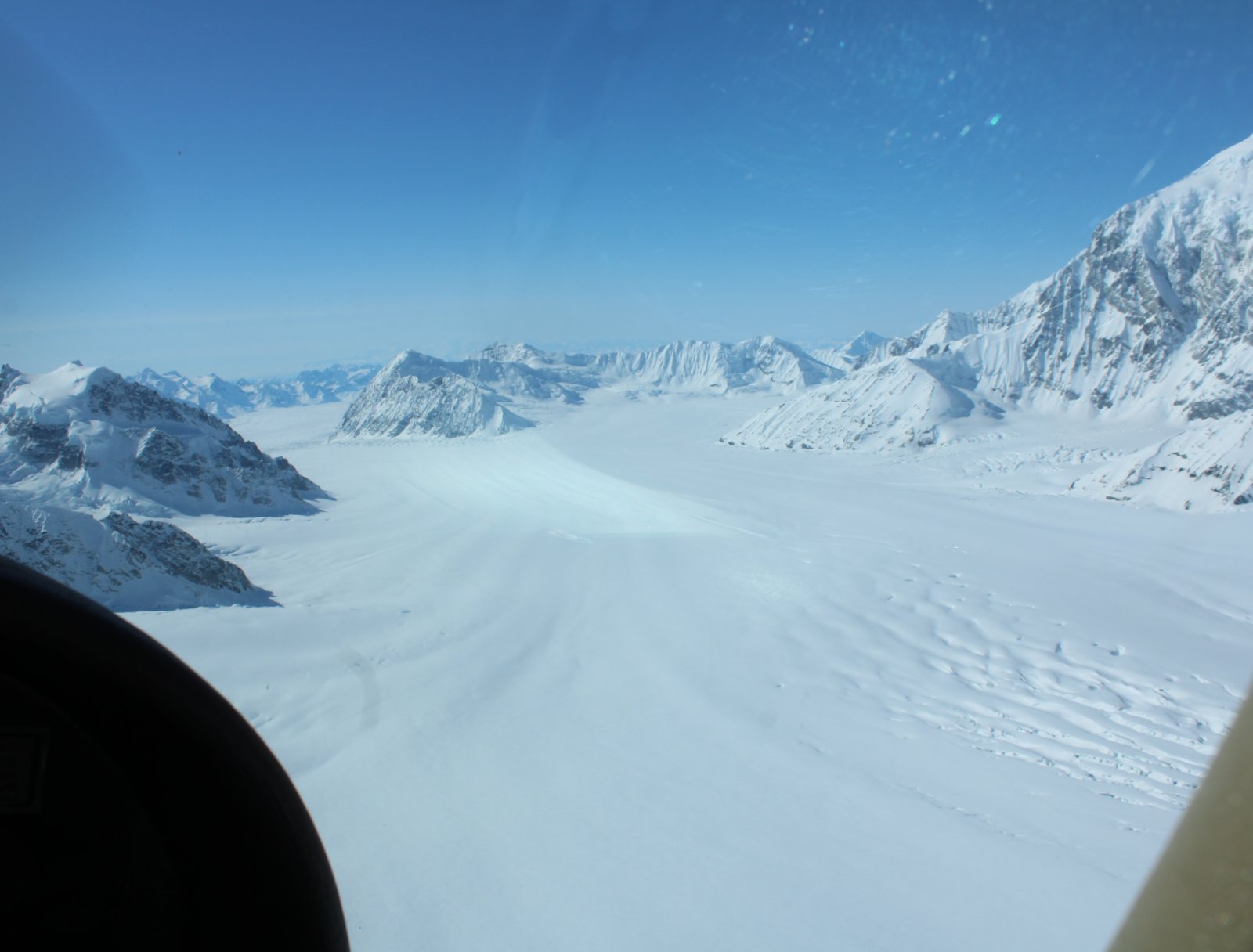
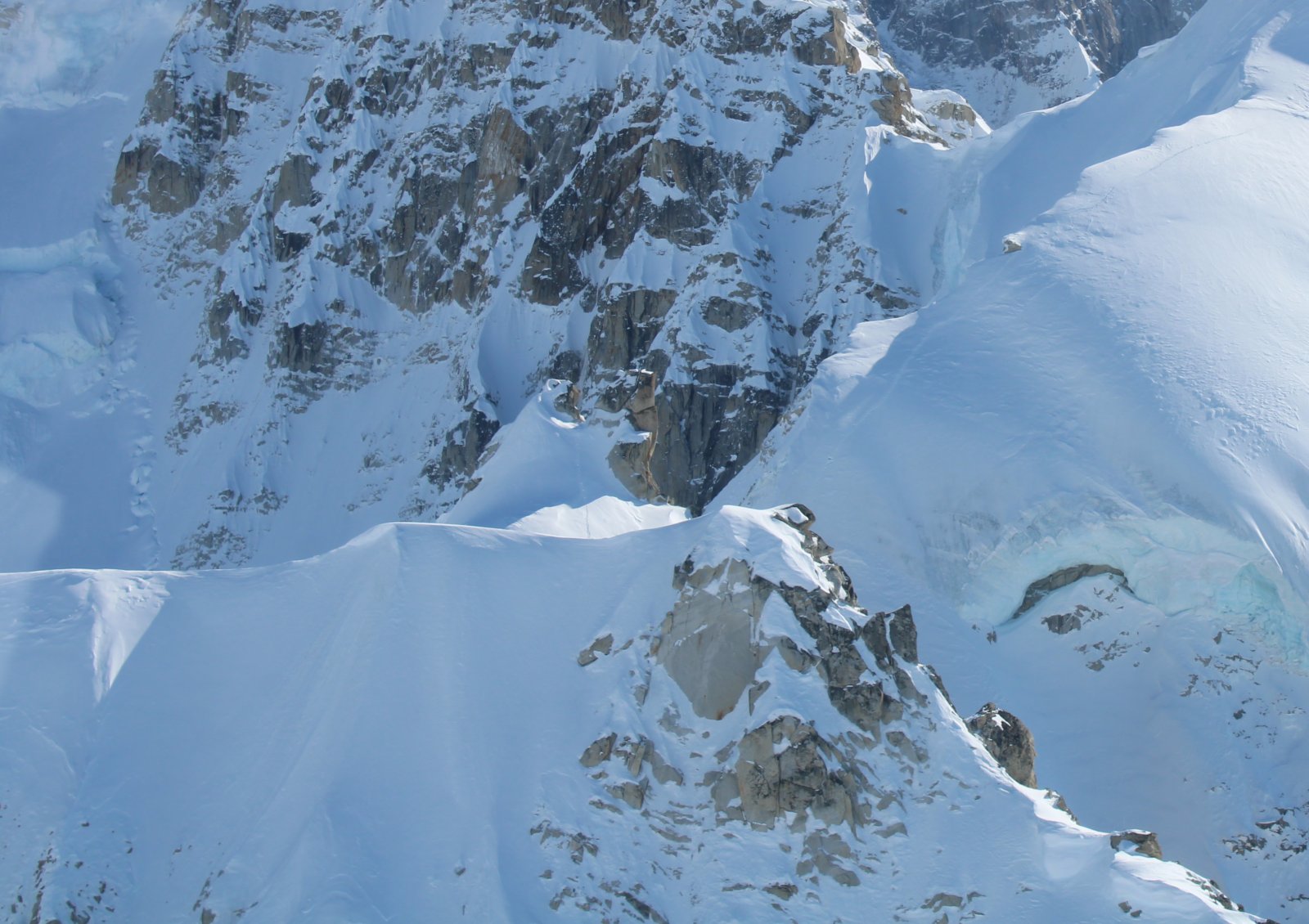
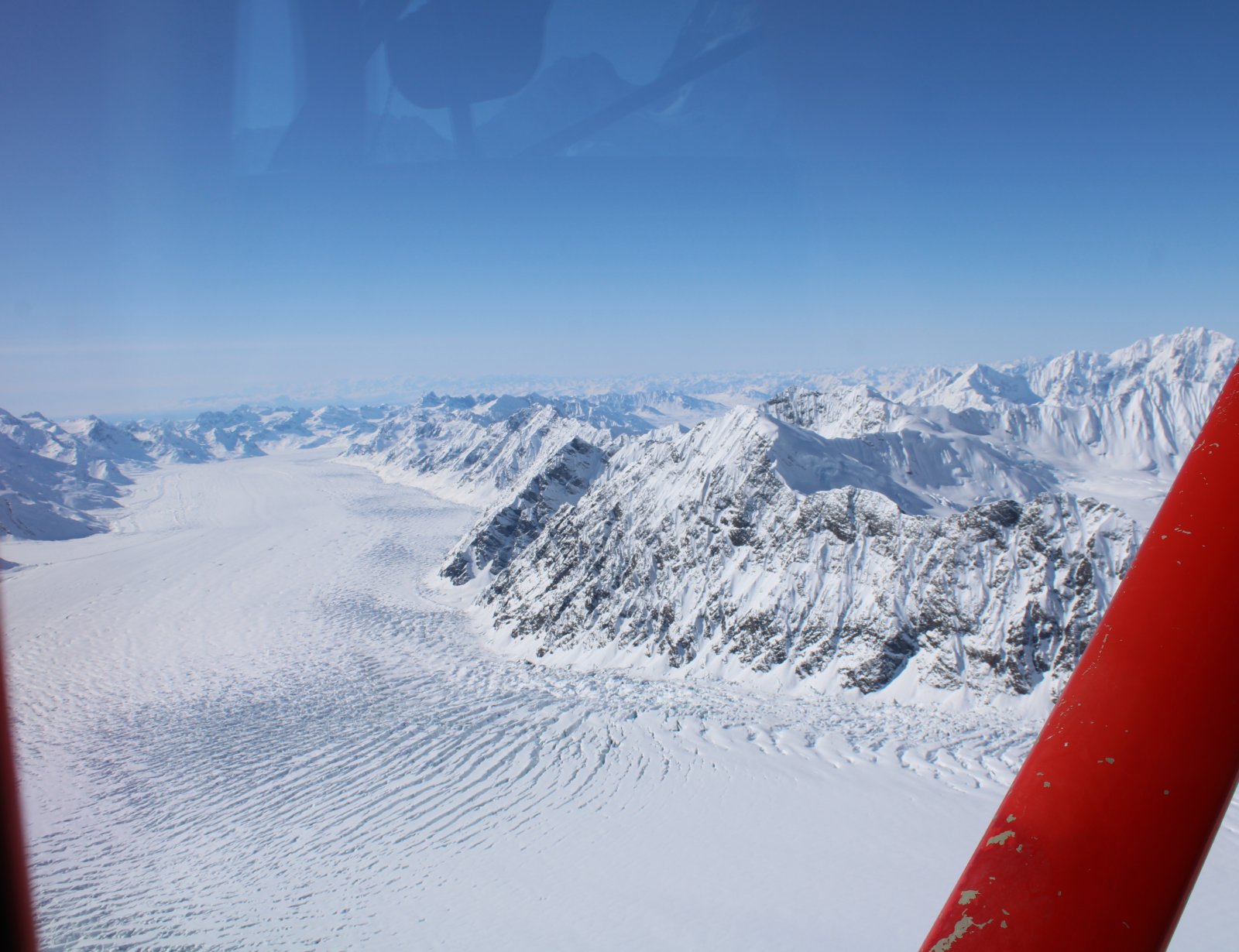
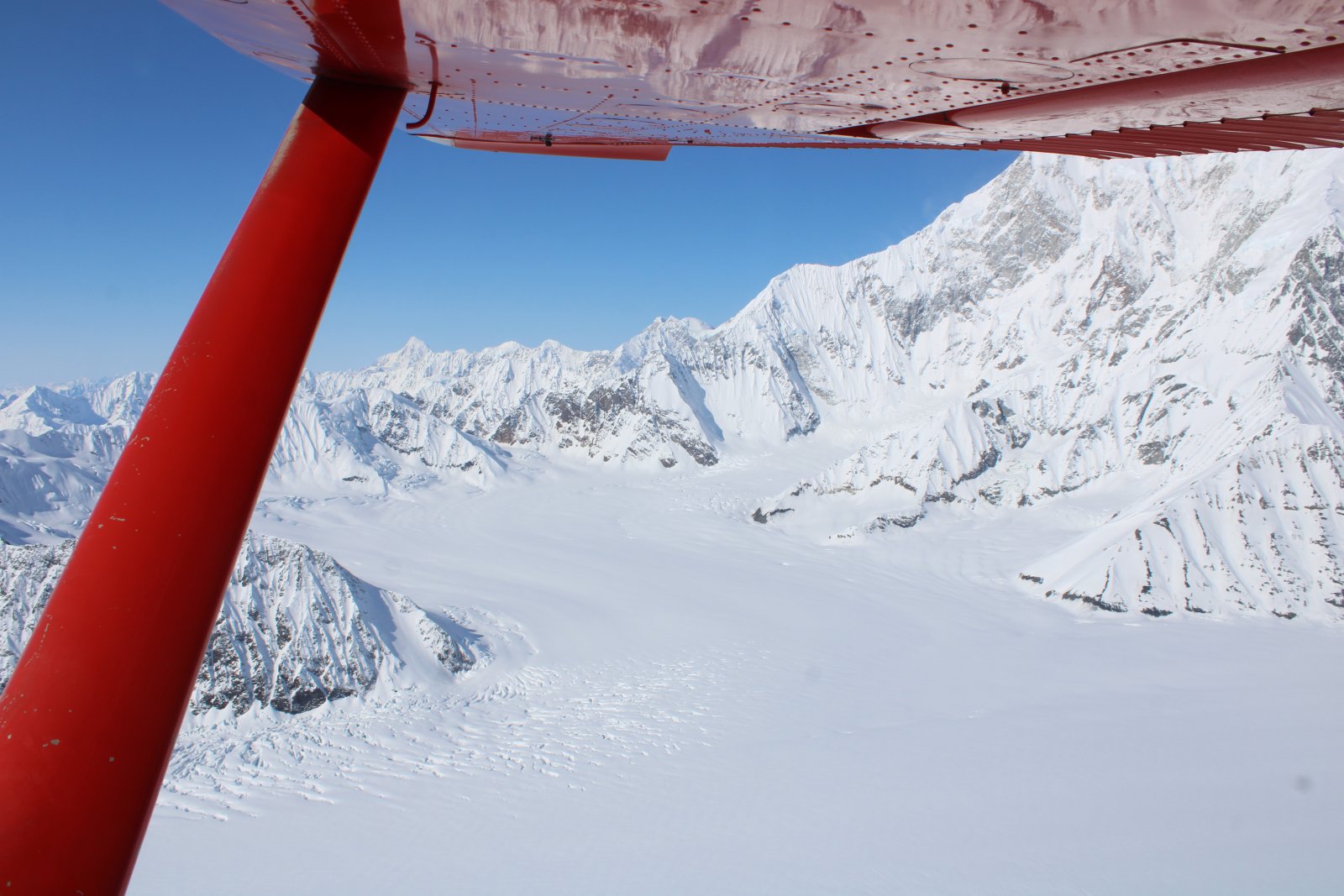
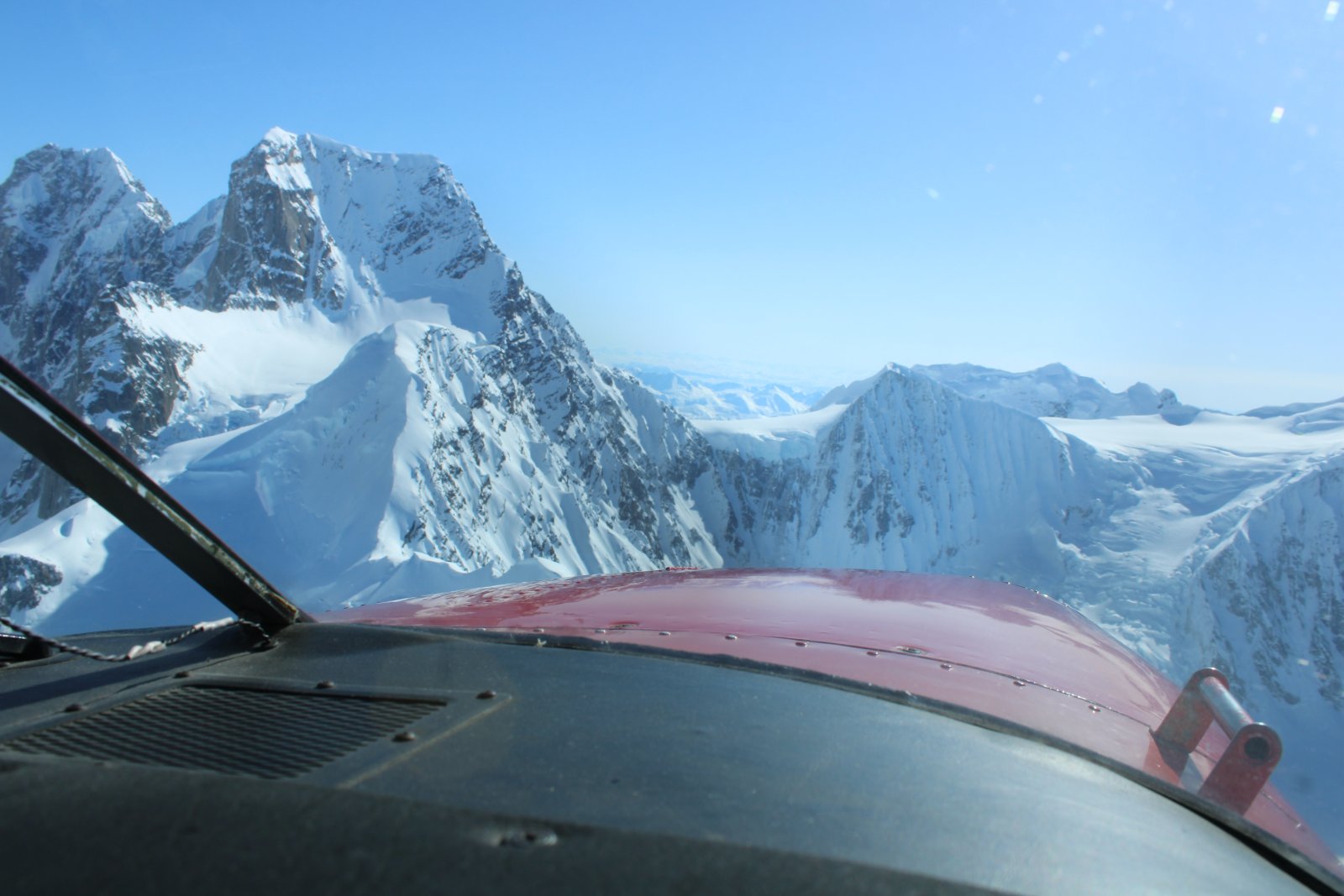
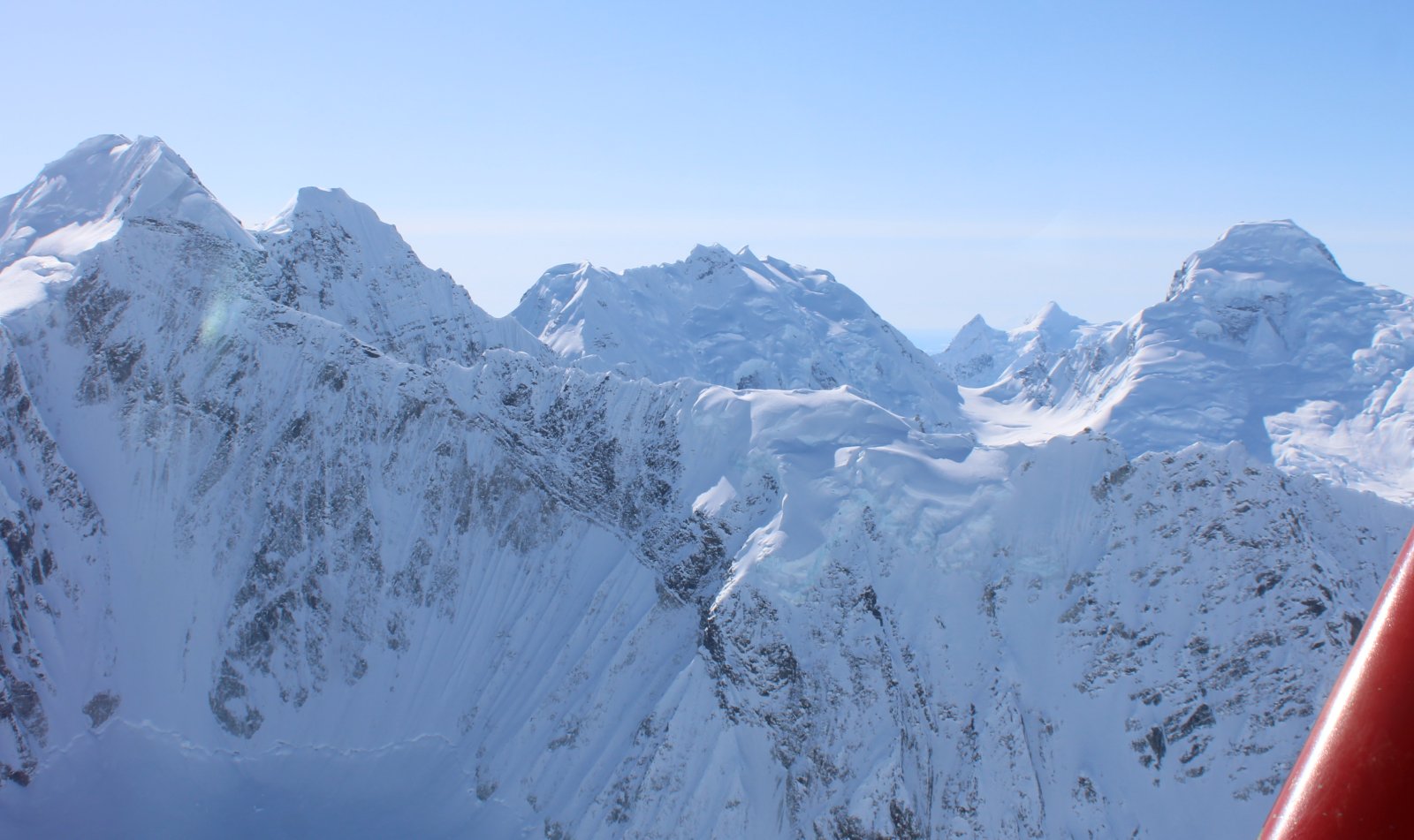
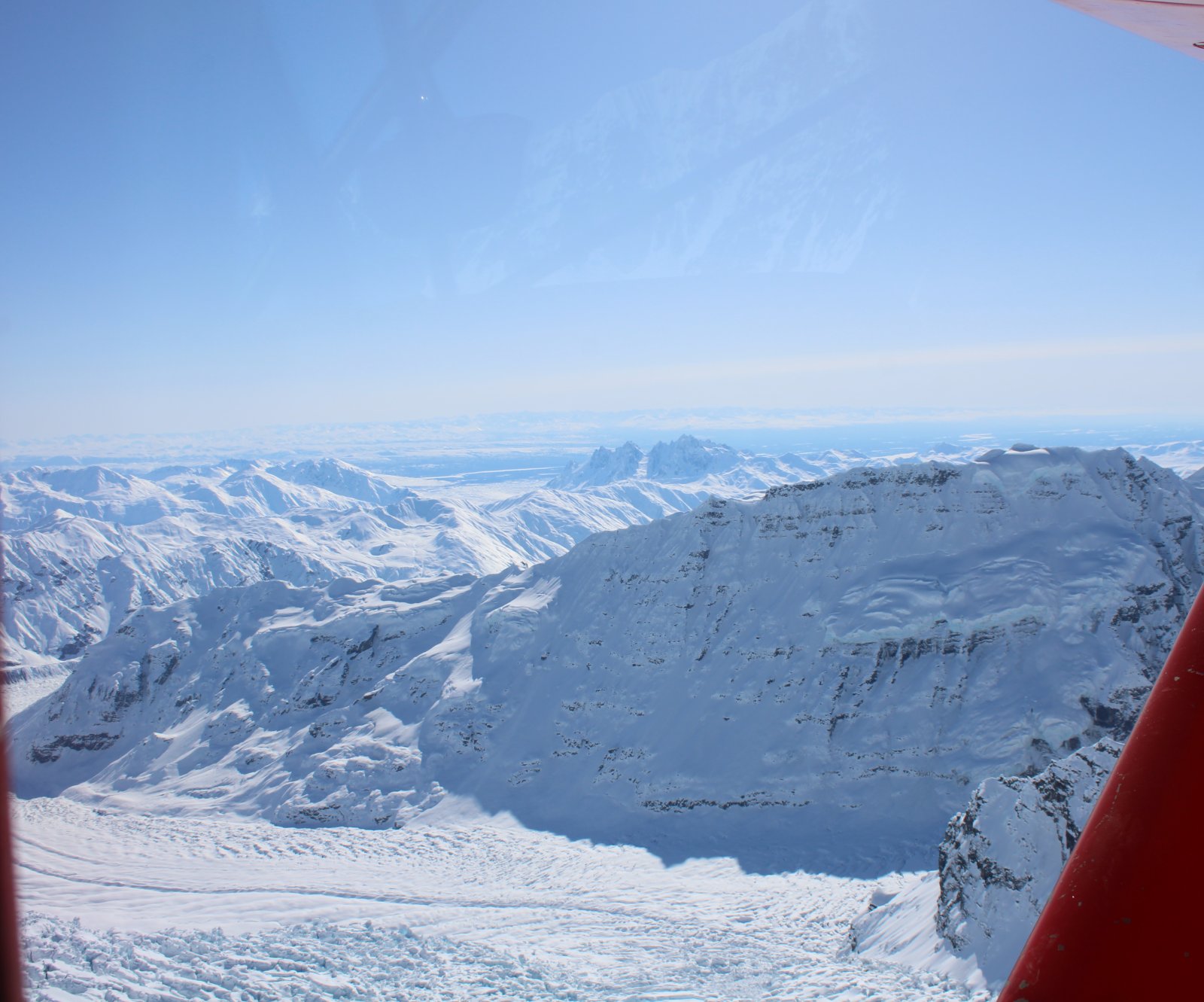
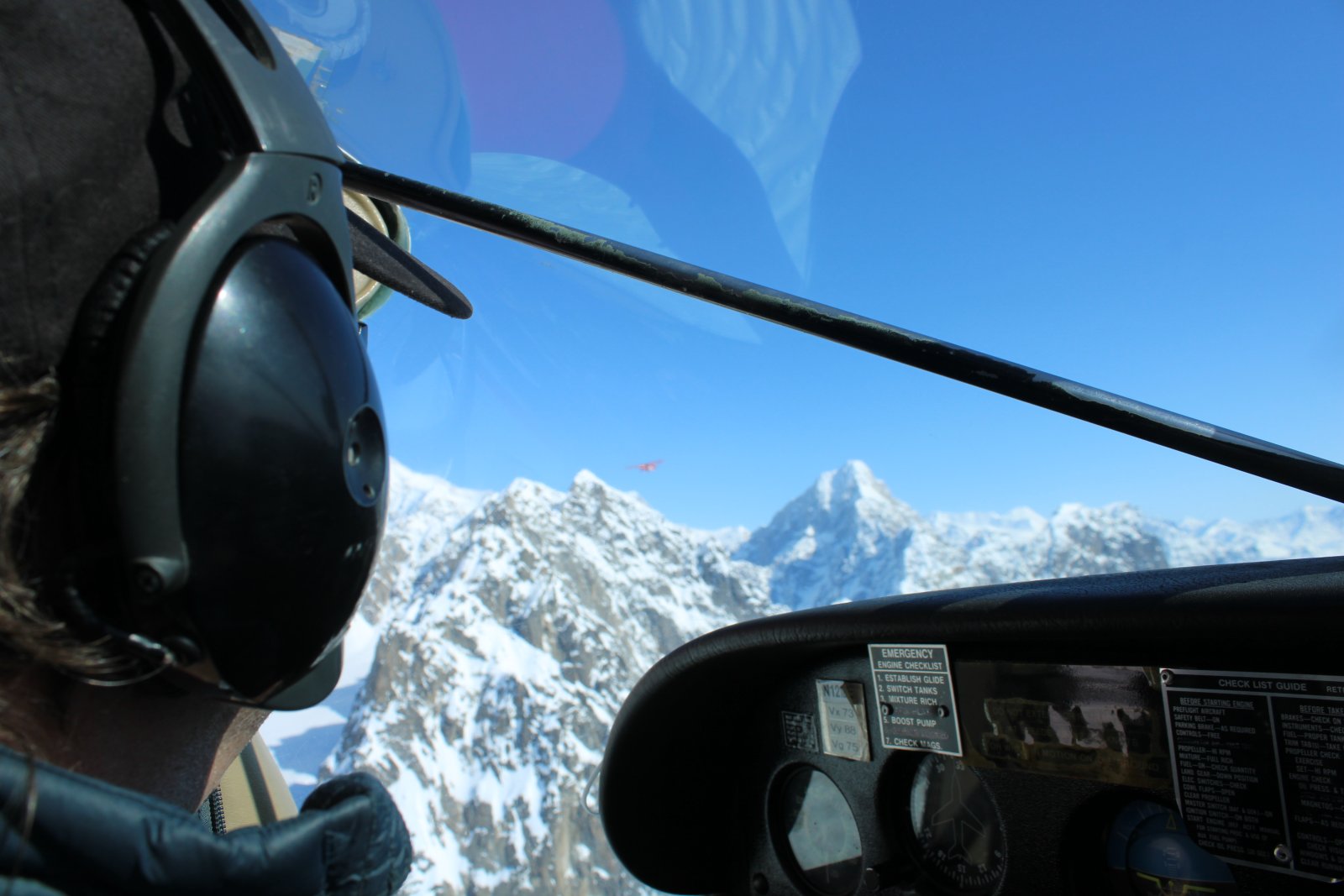
Now about to overfly Ruth Glacier. You can see where the glacier has carved out the side of the mountain on the left there.
